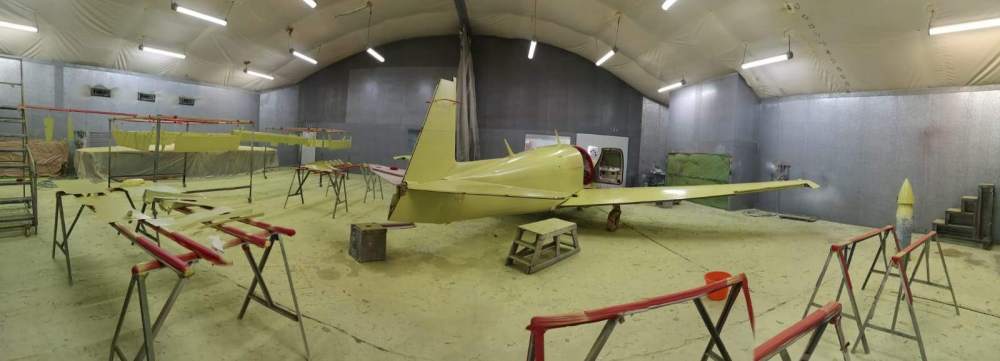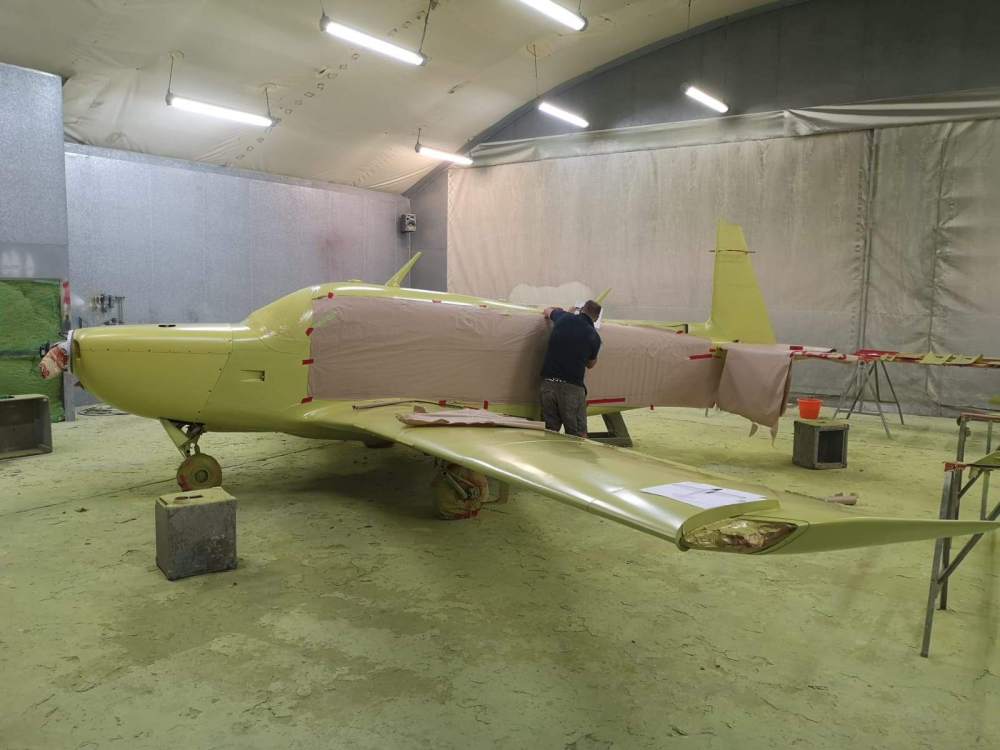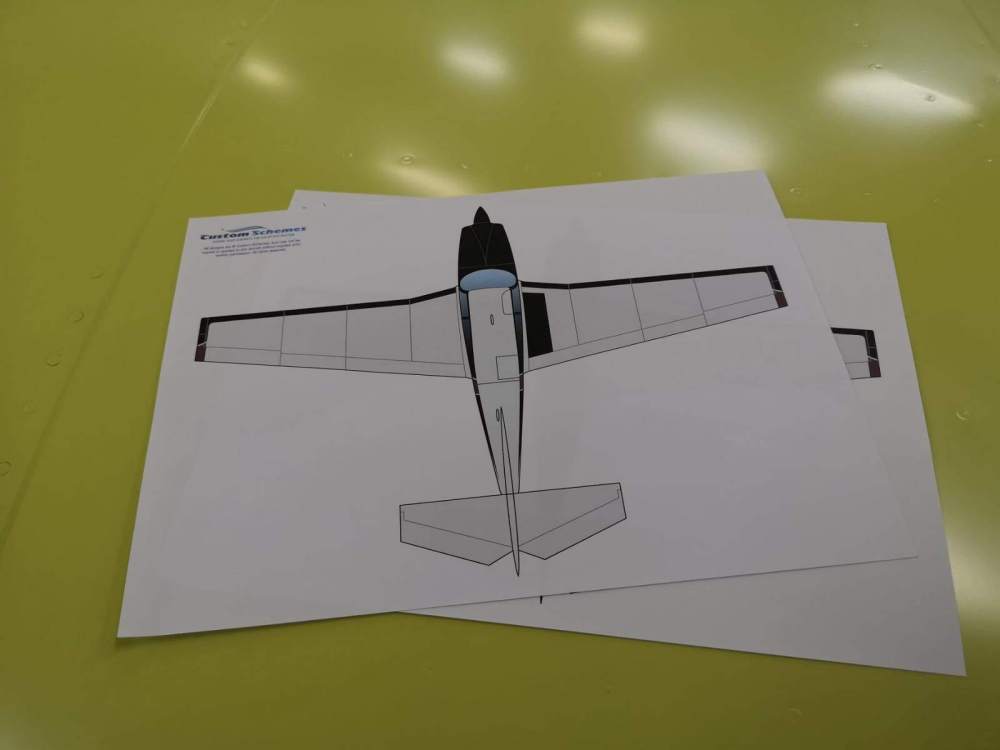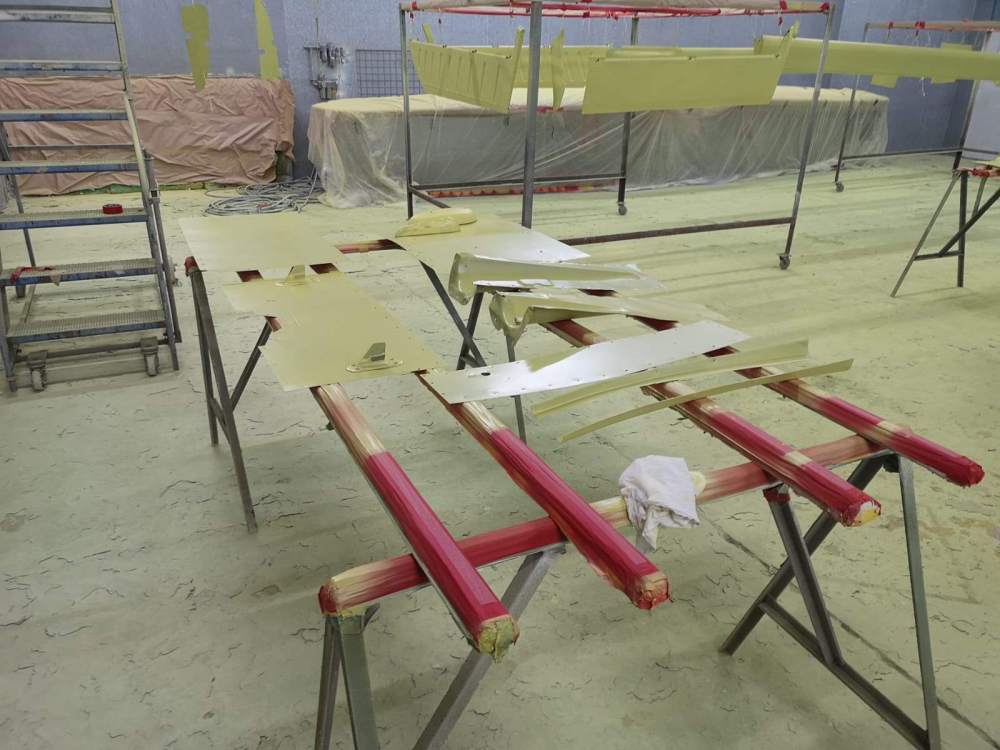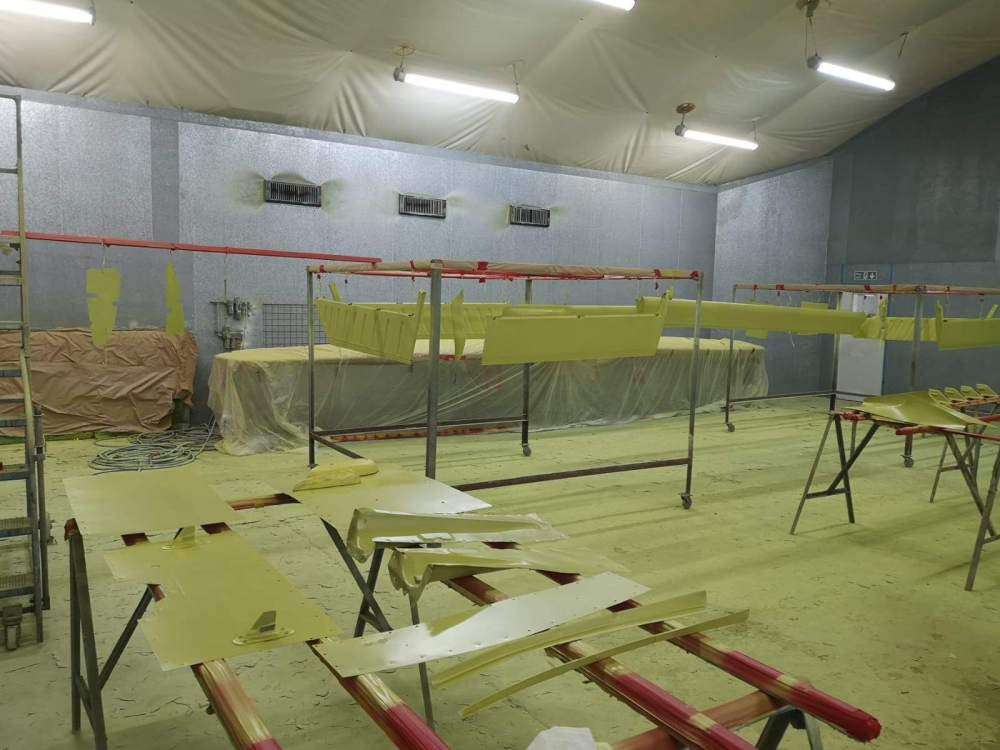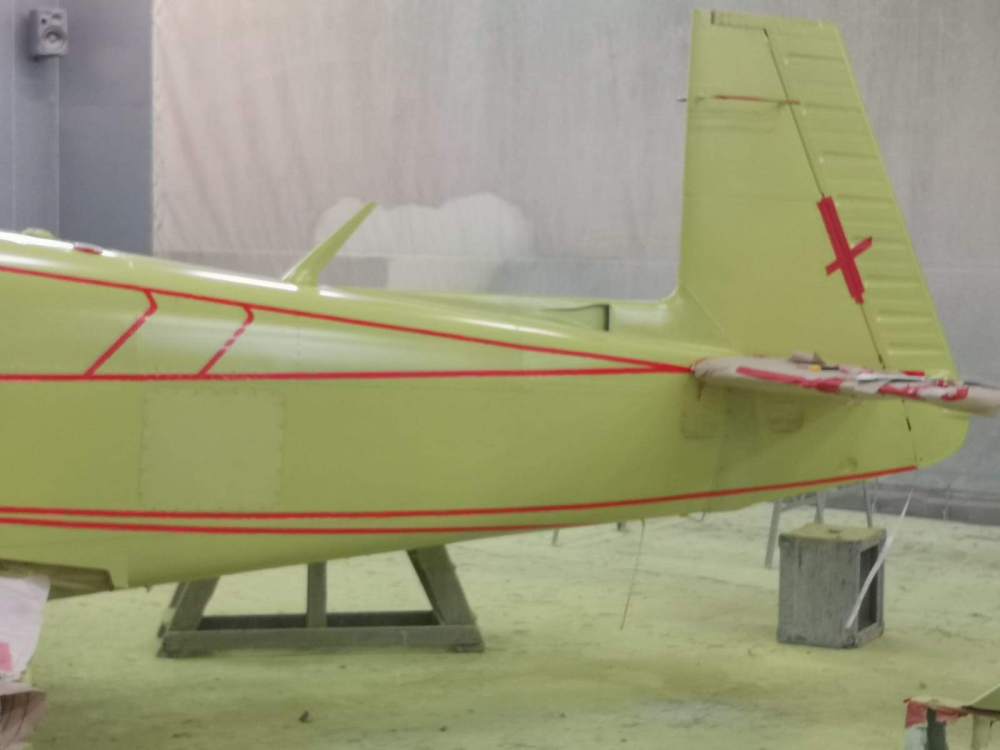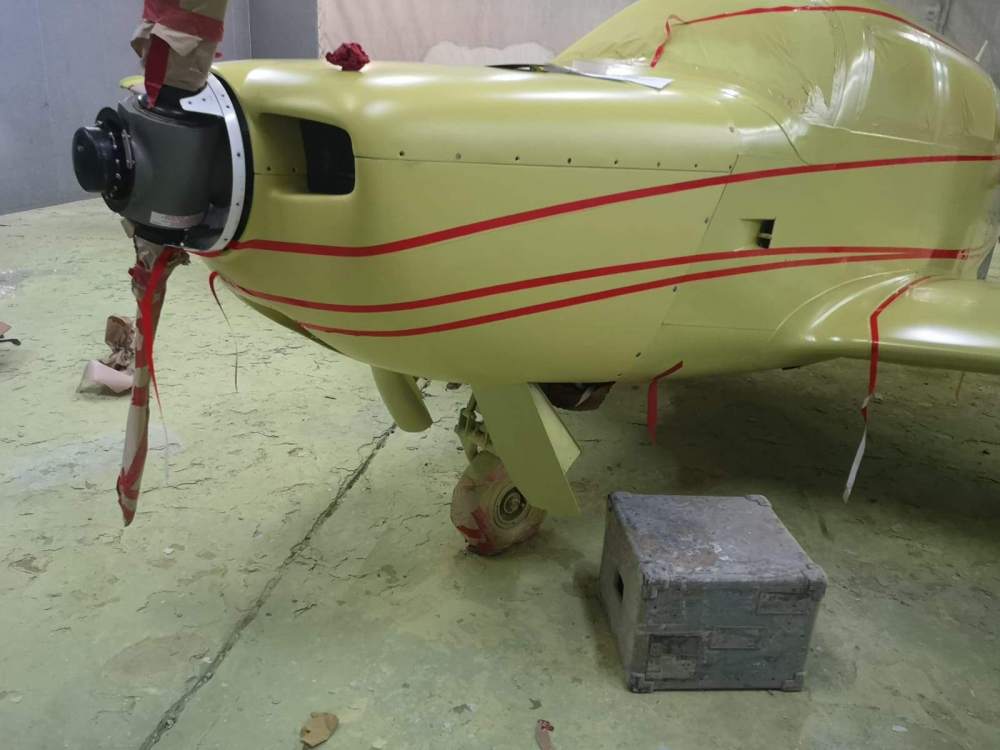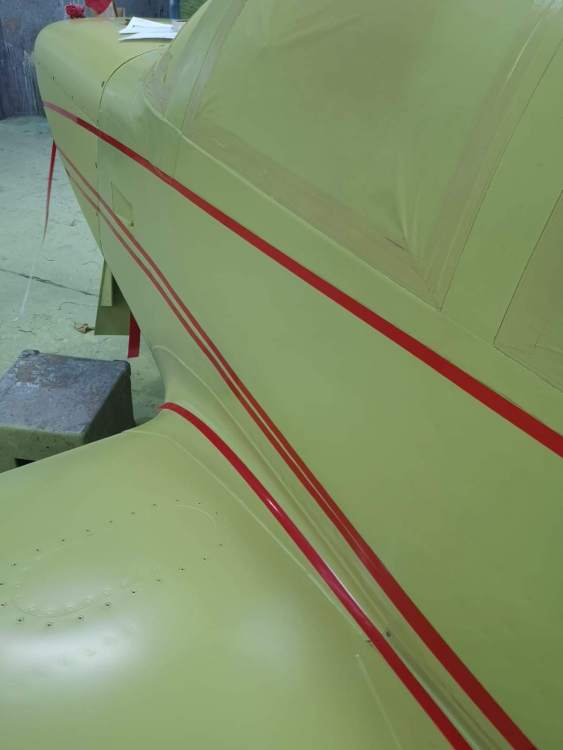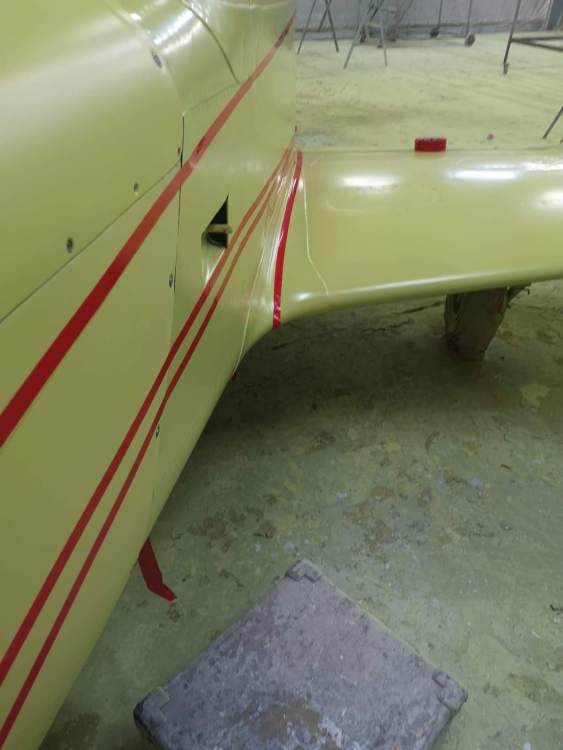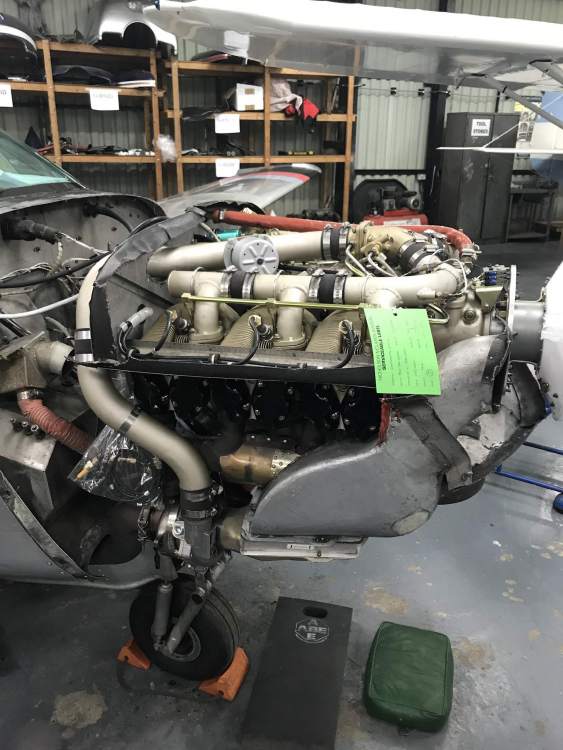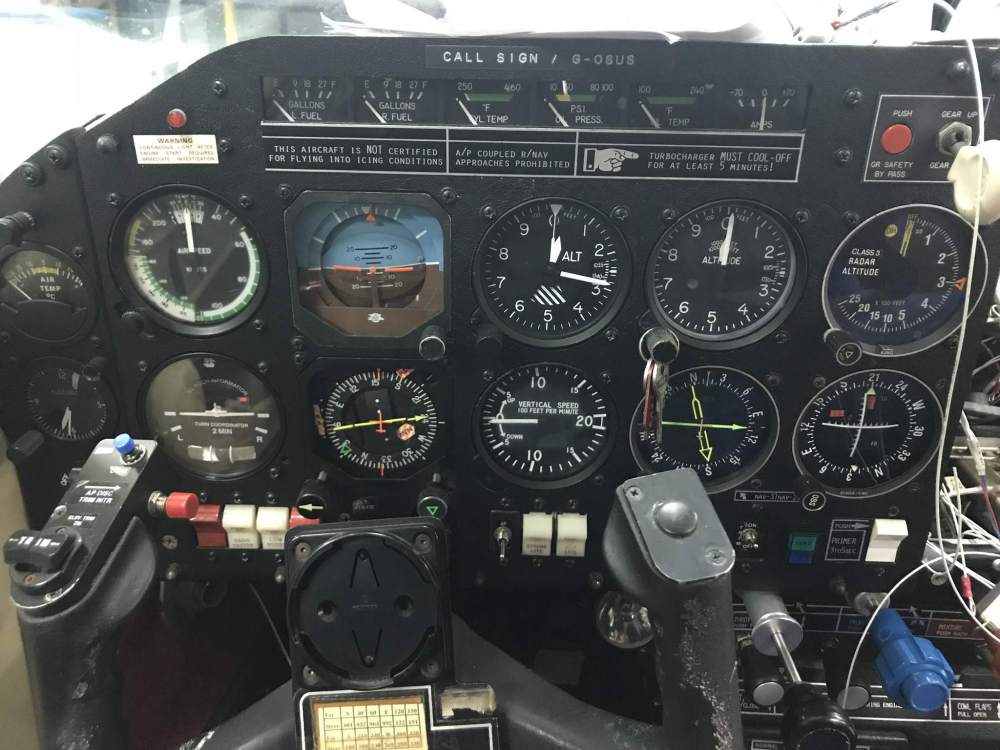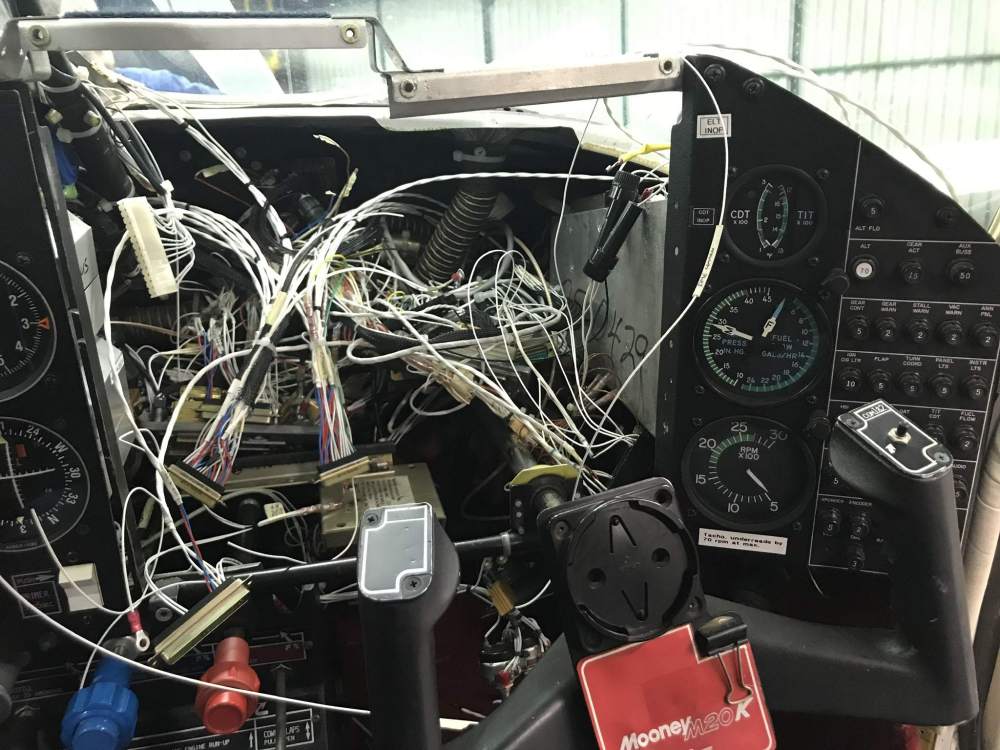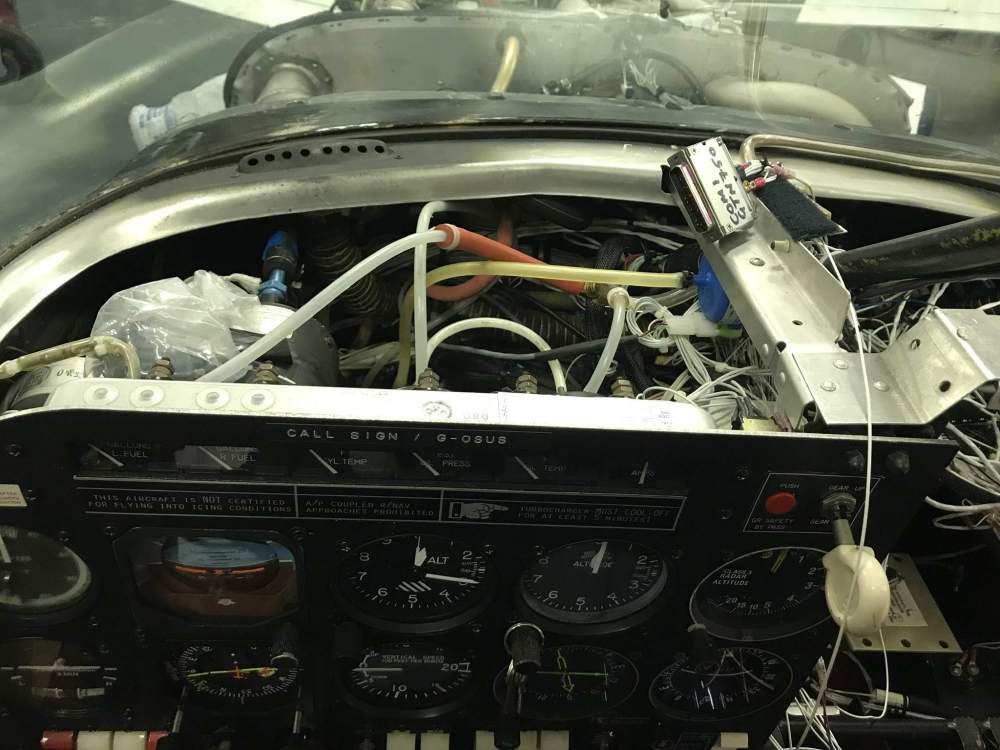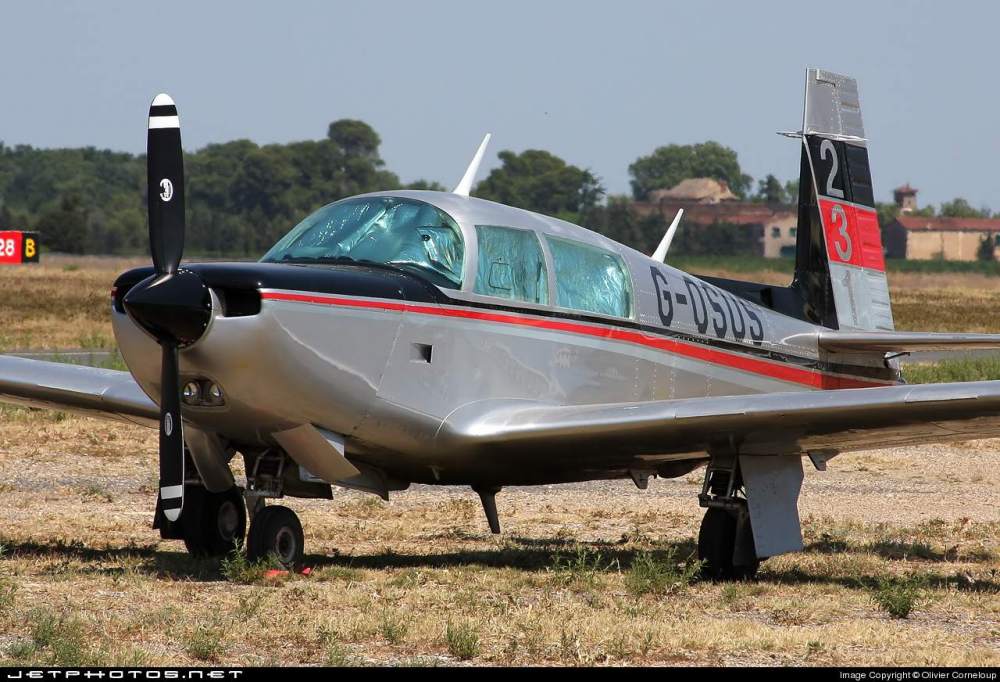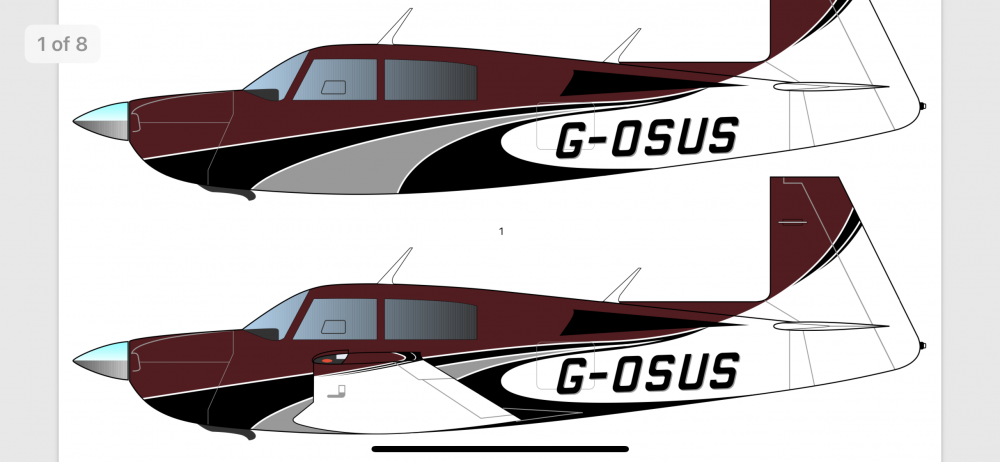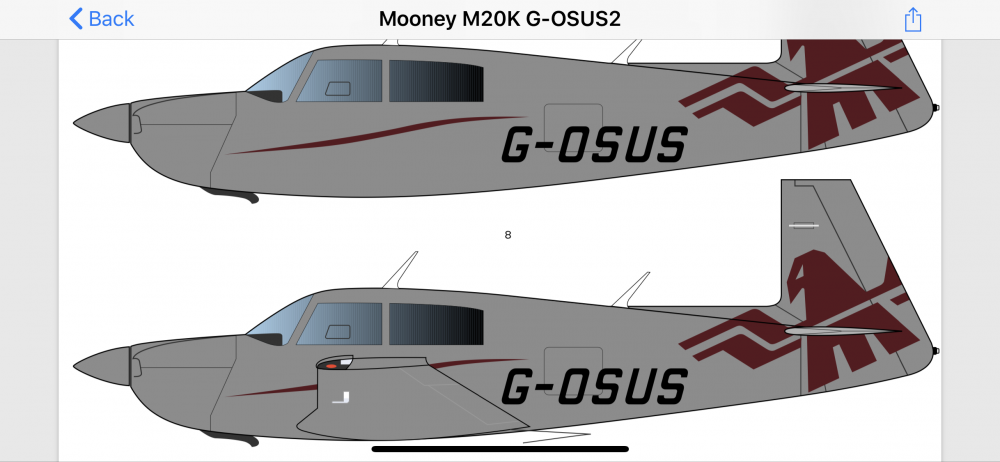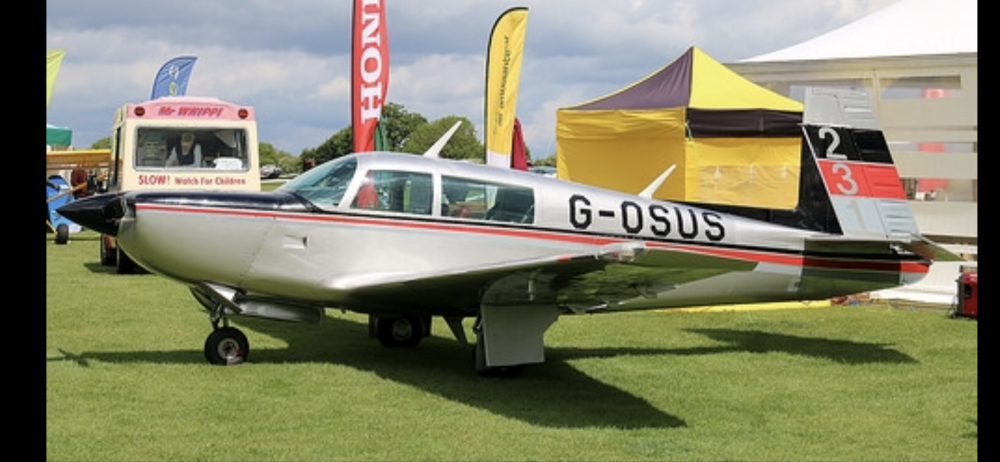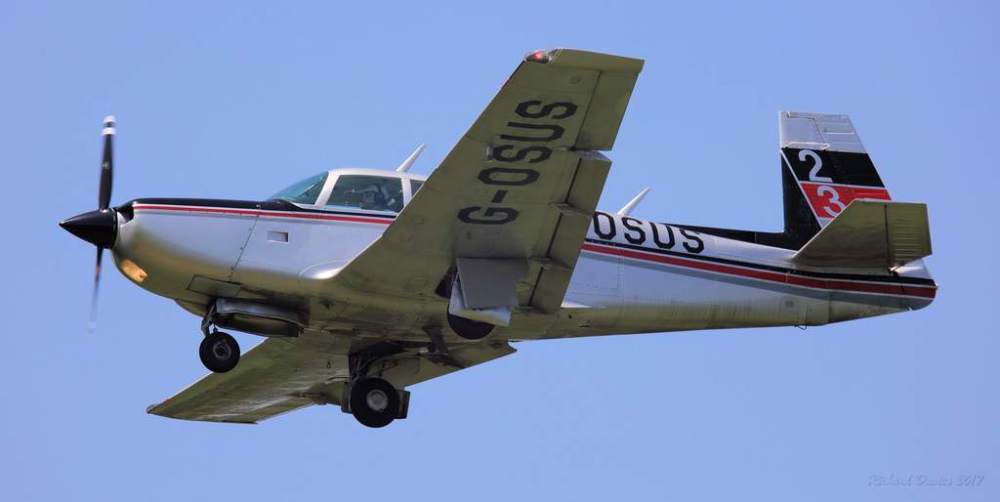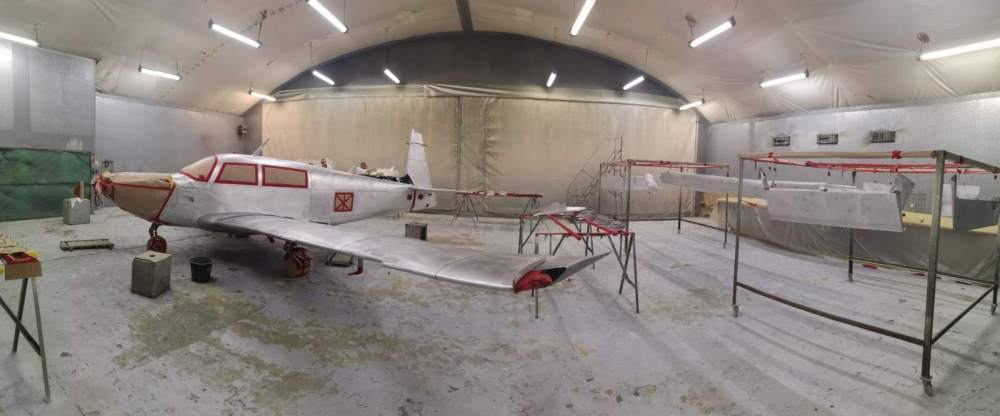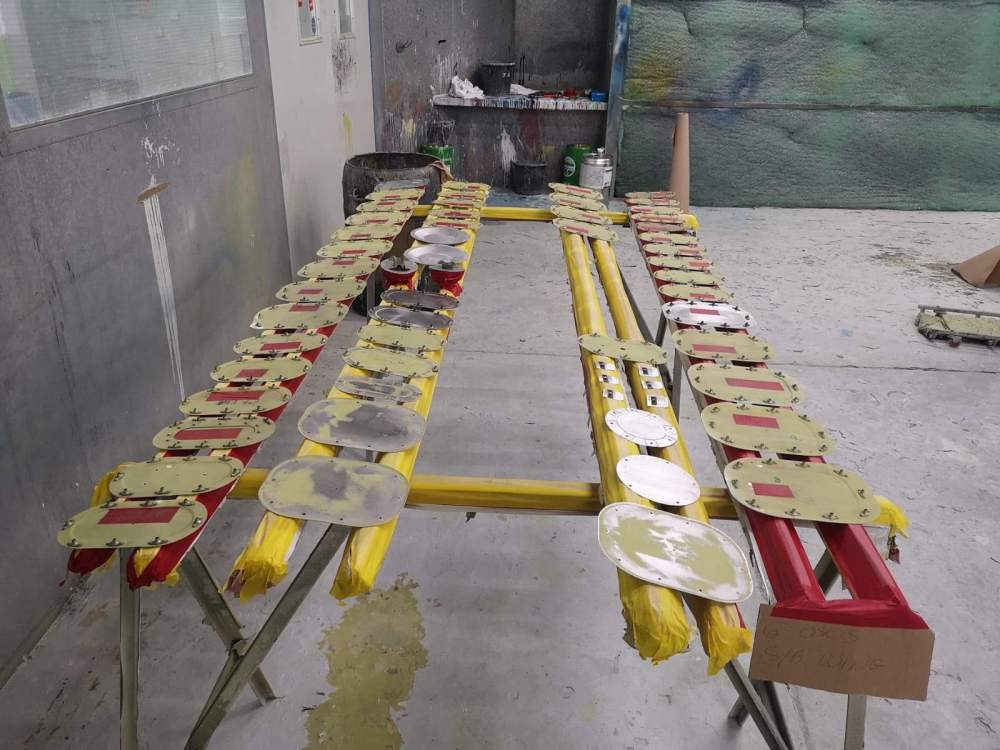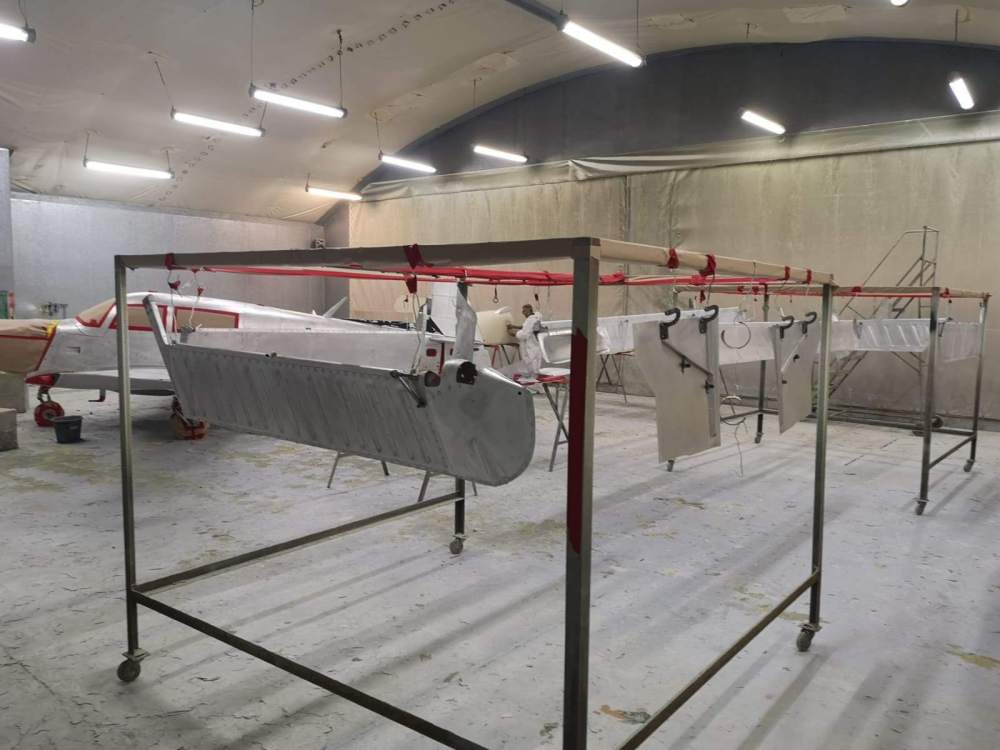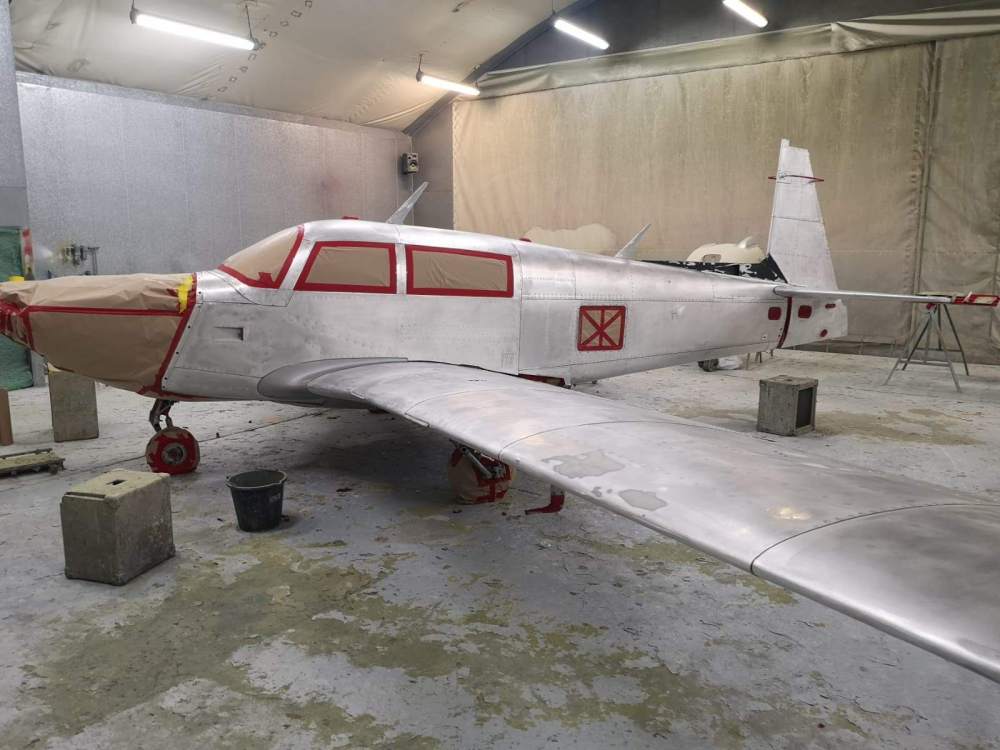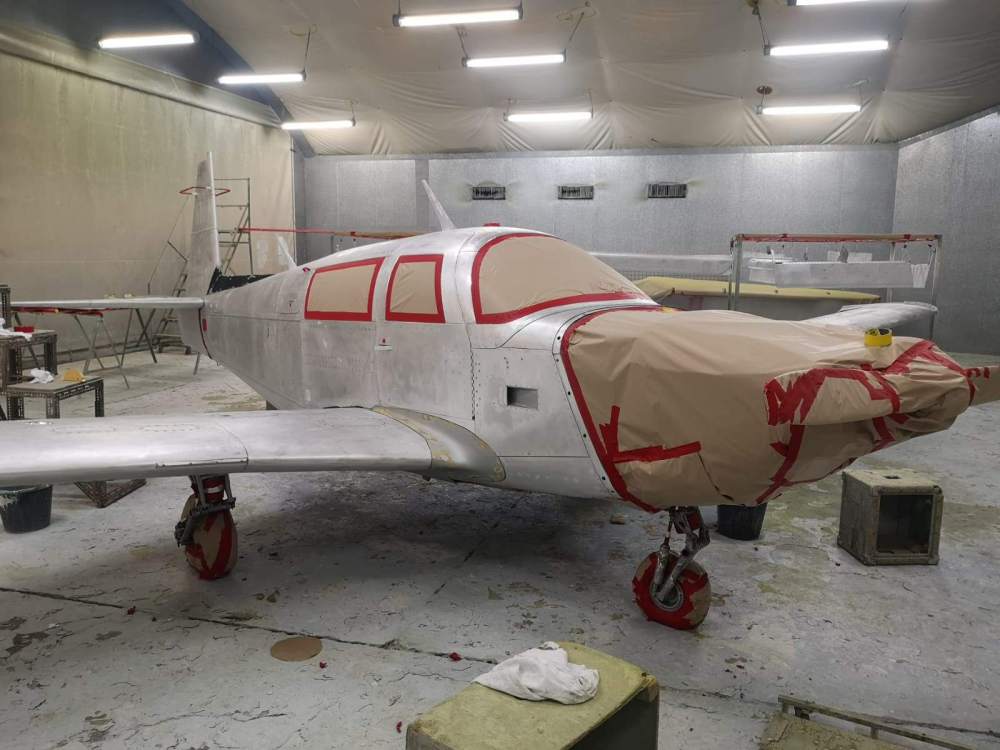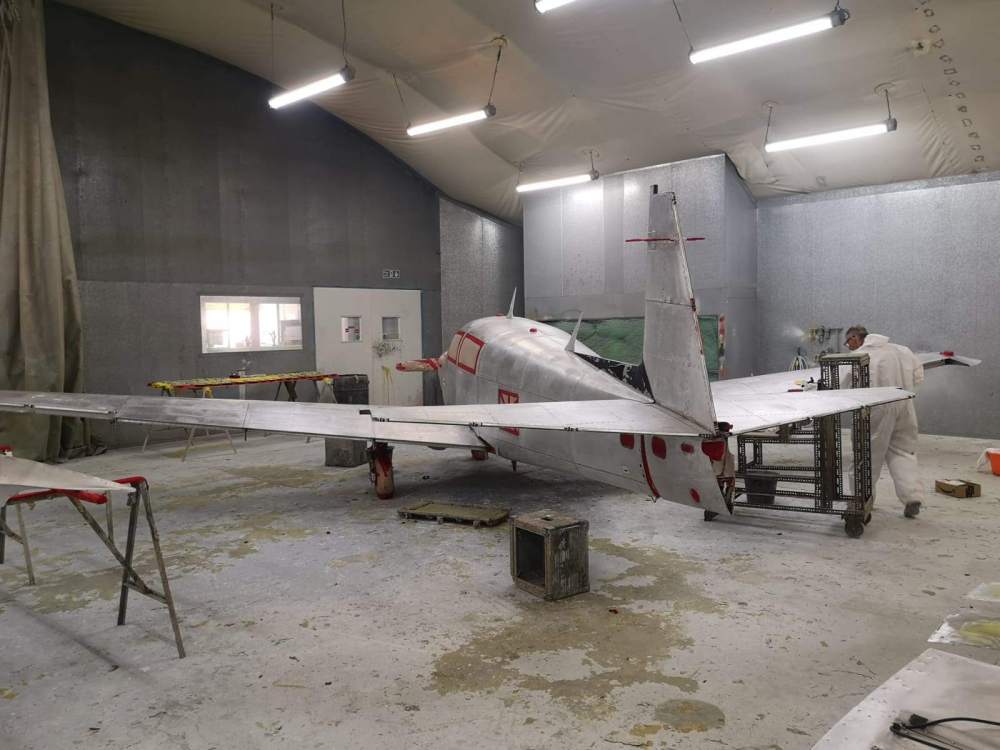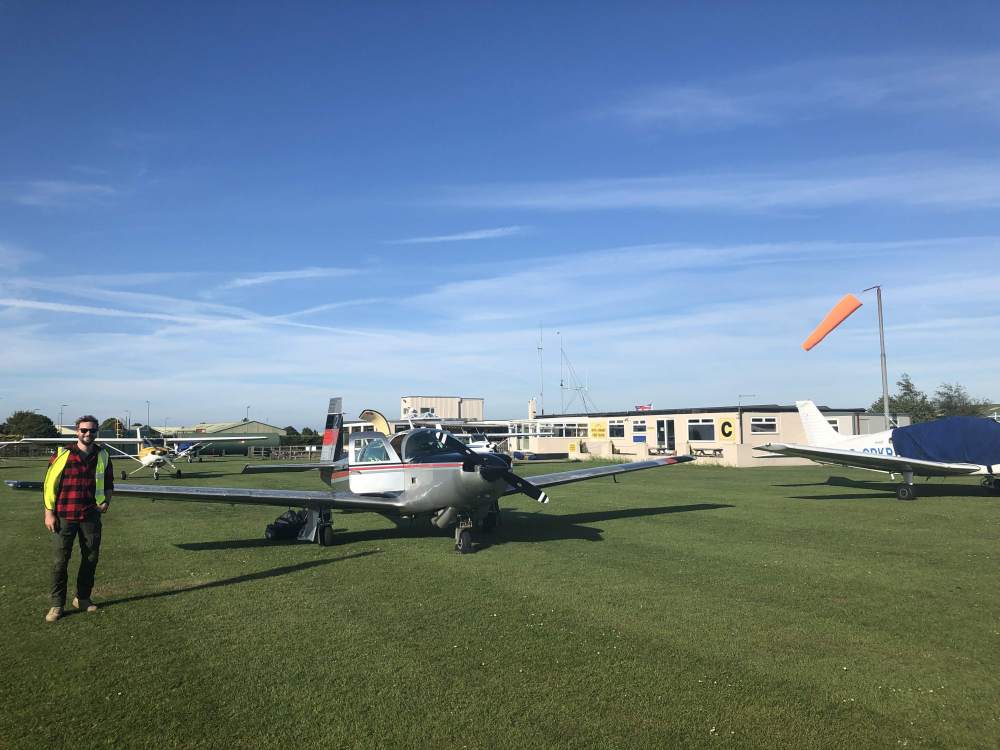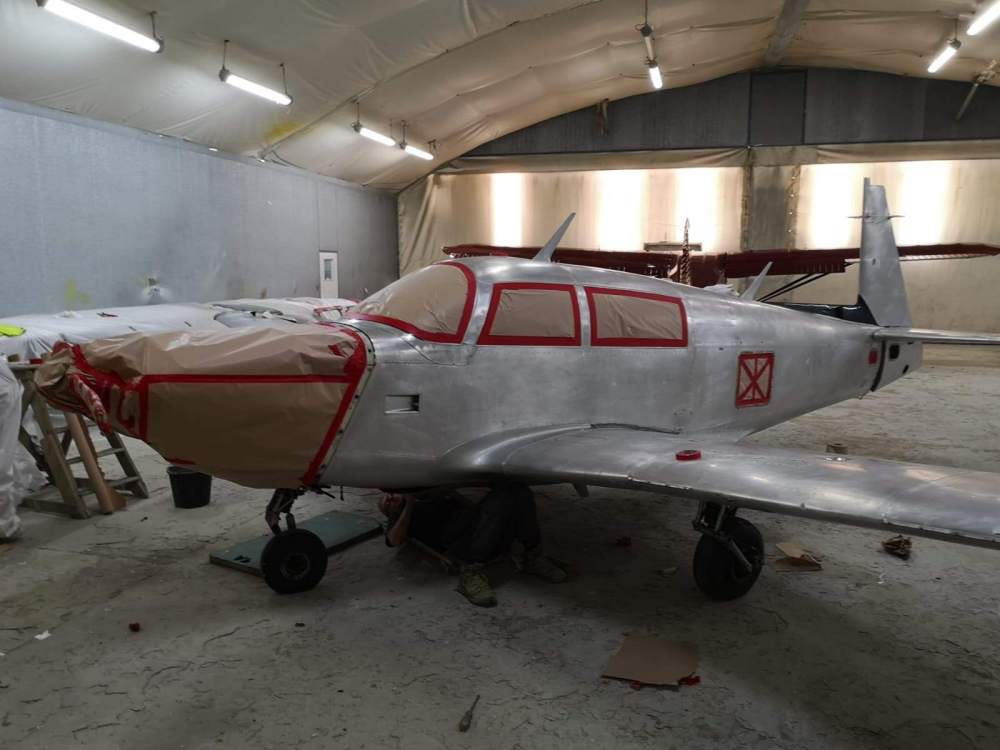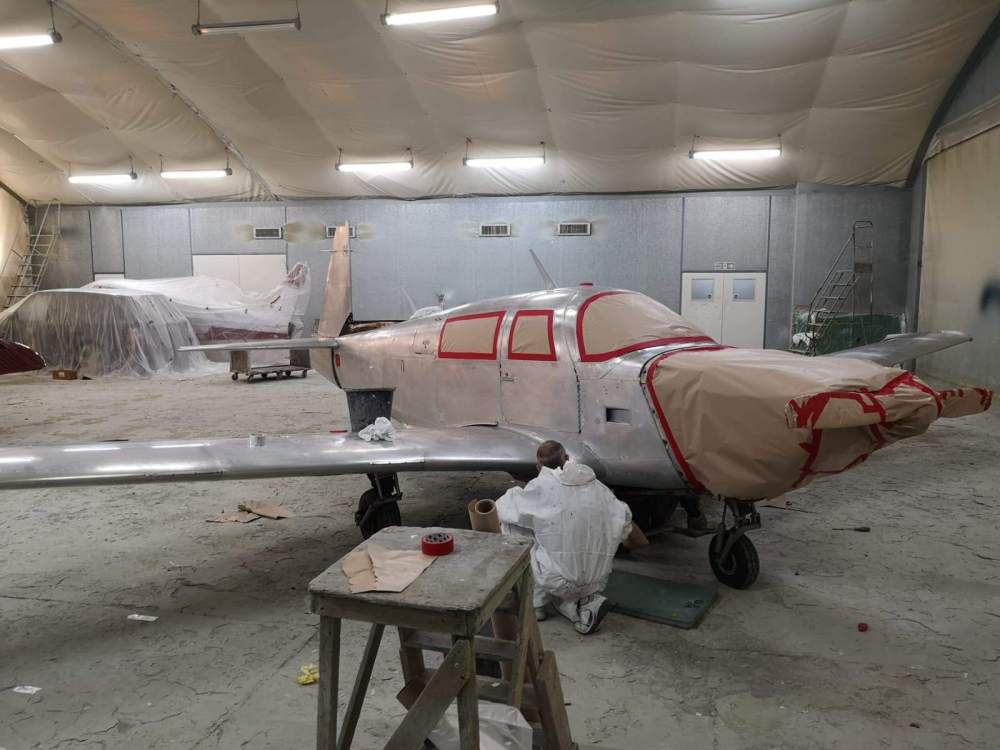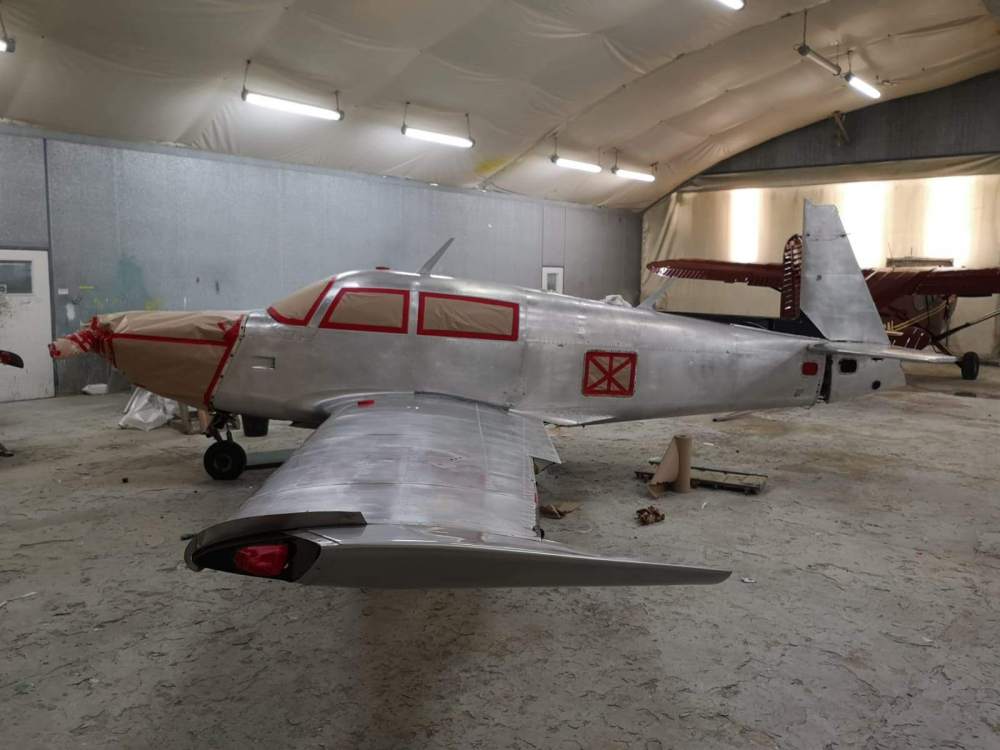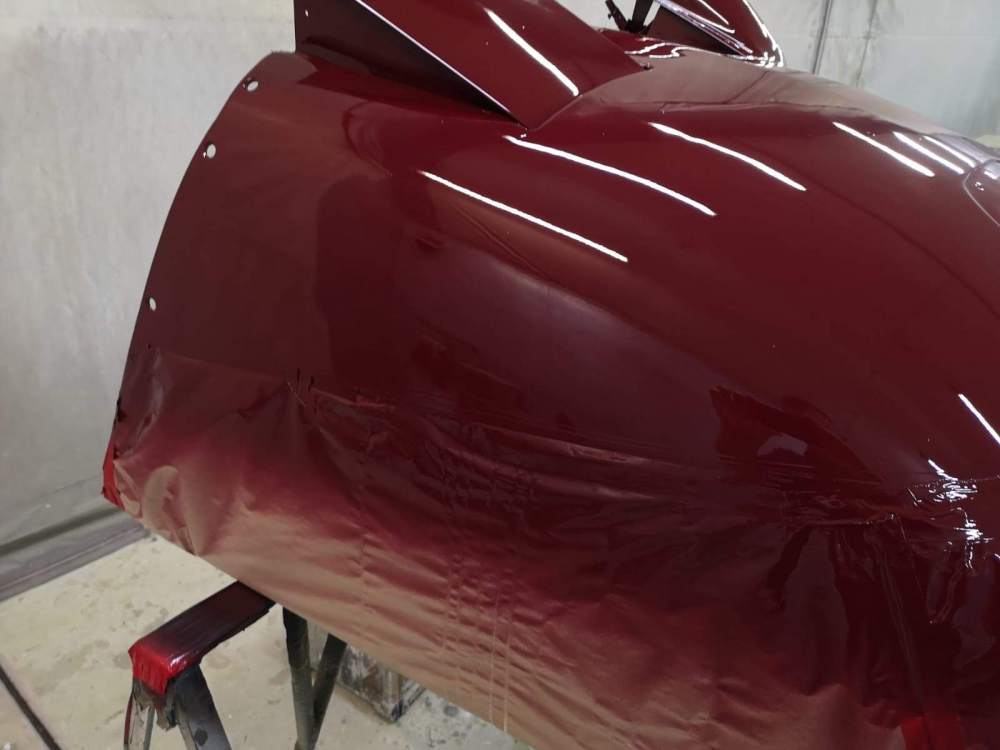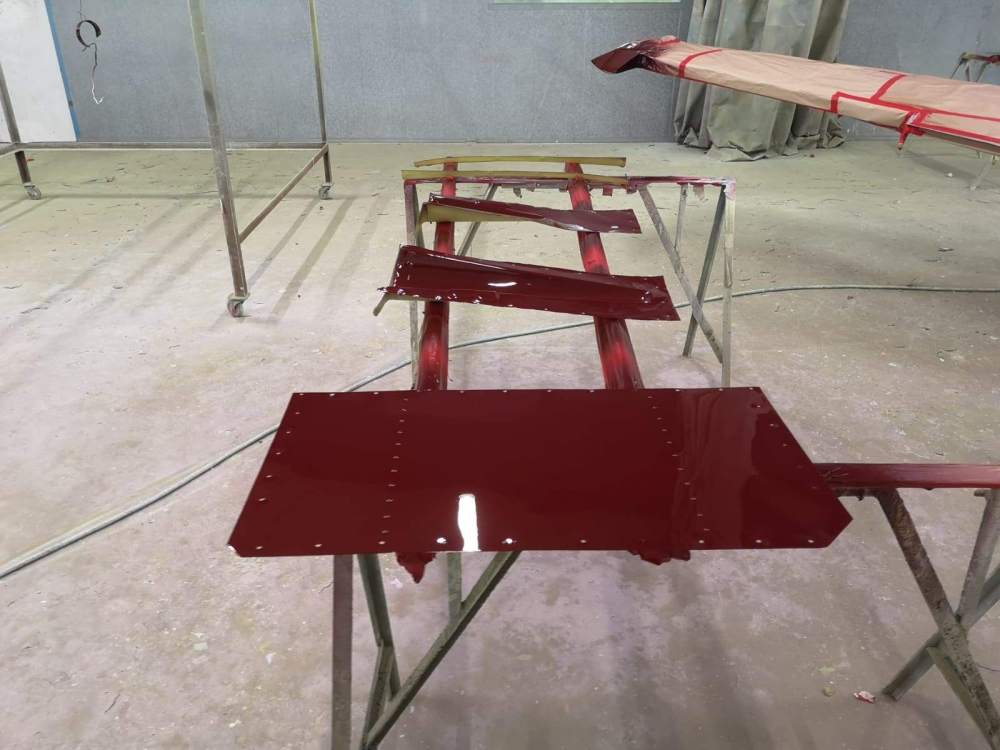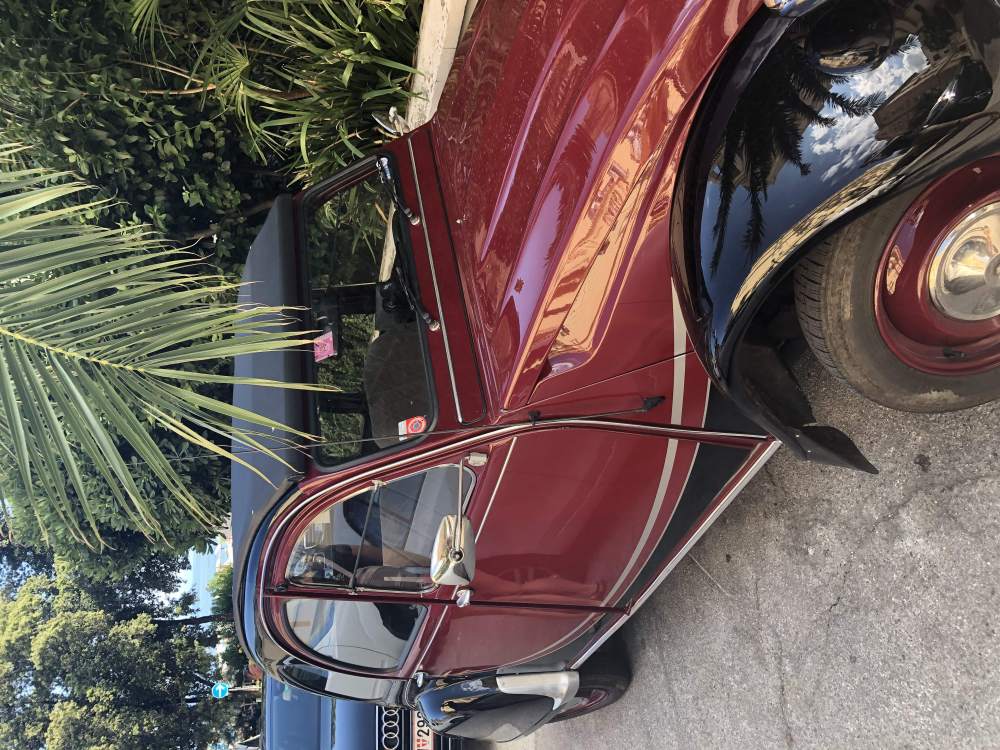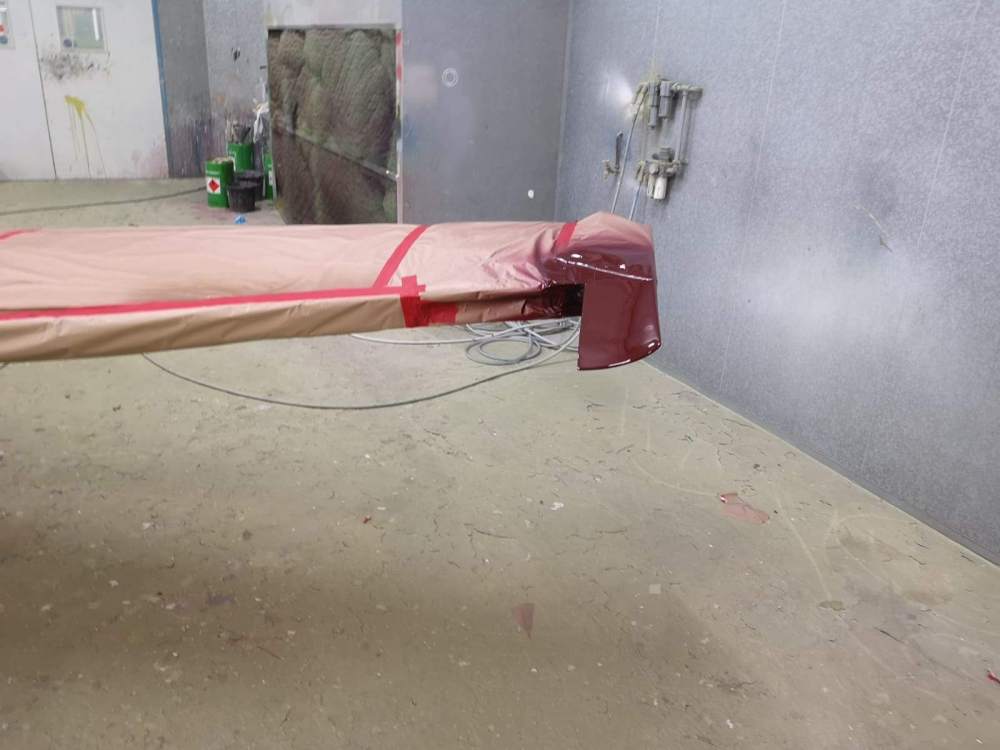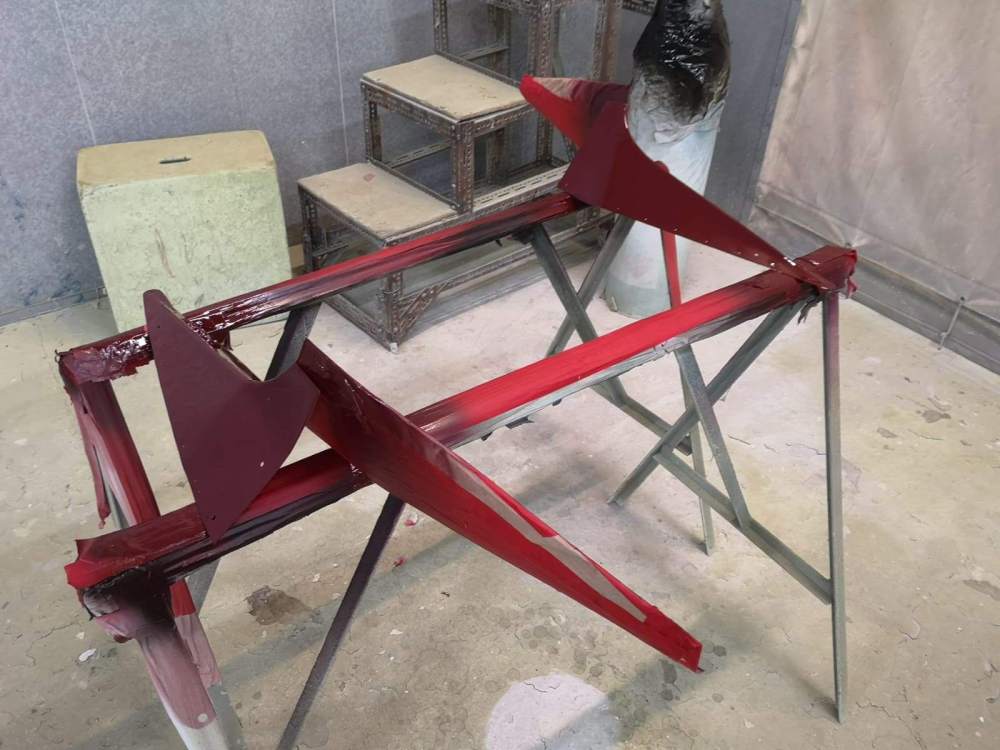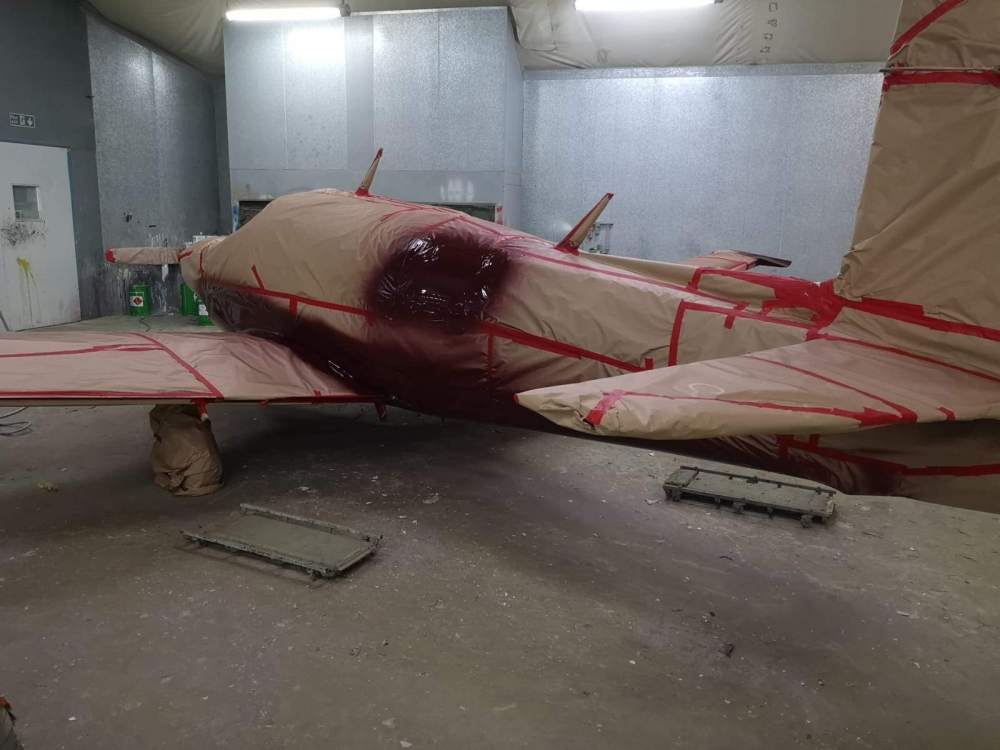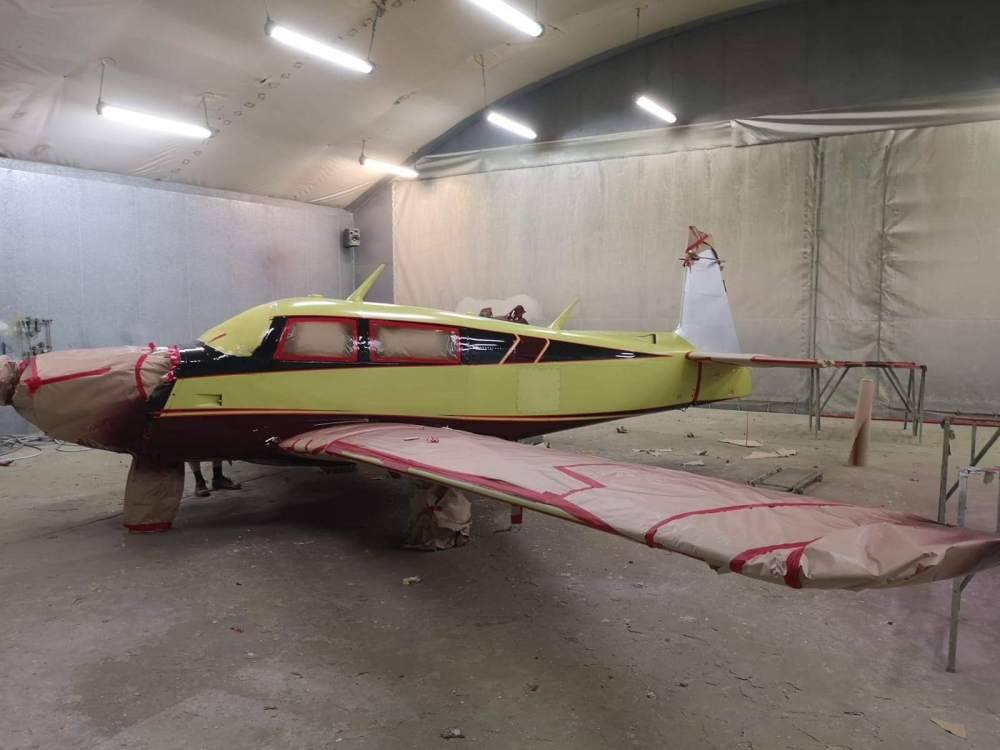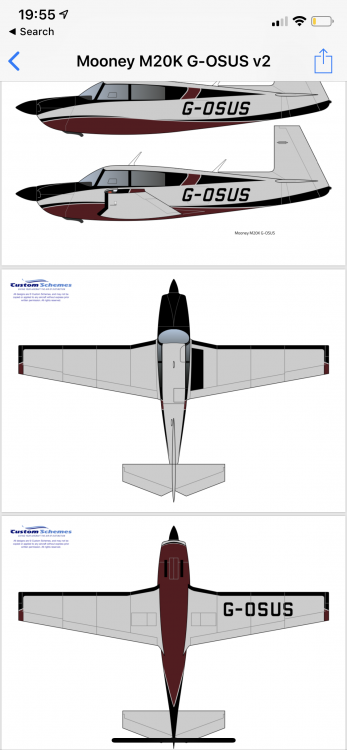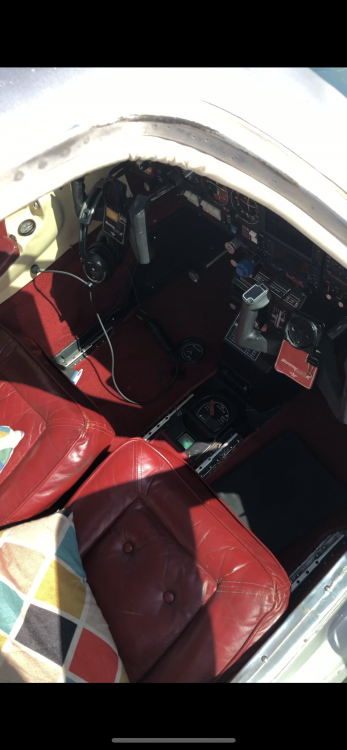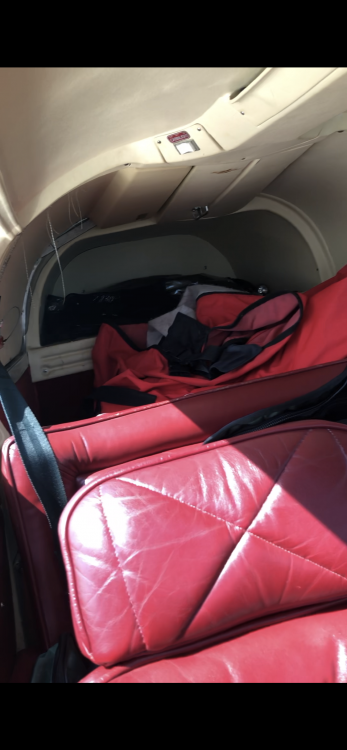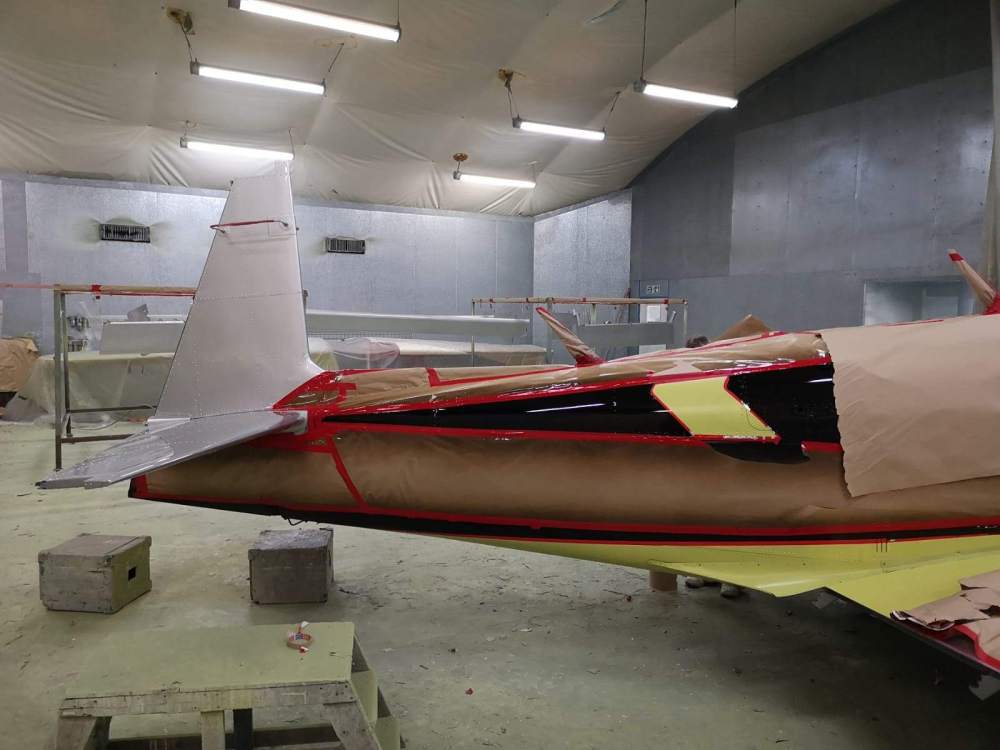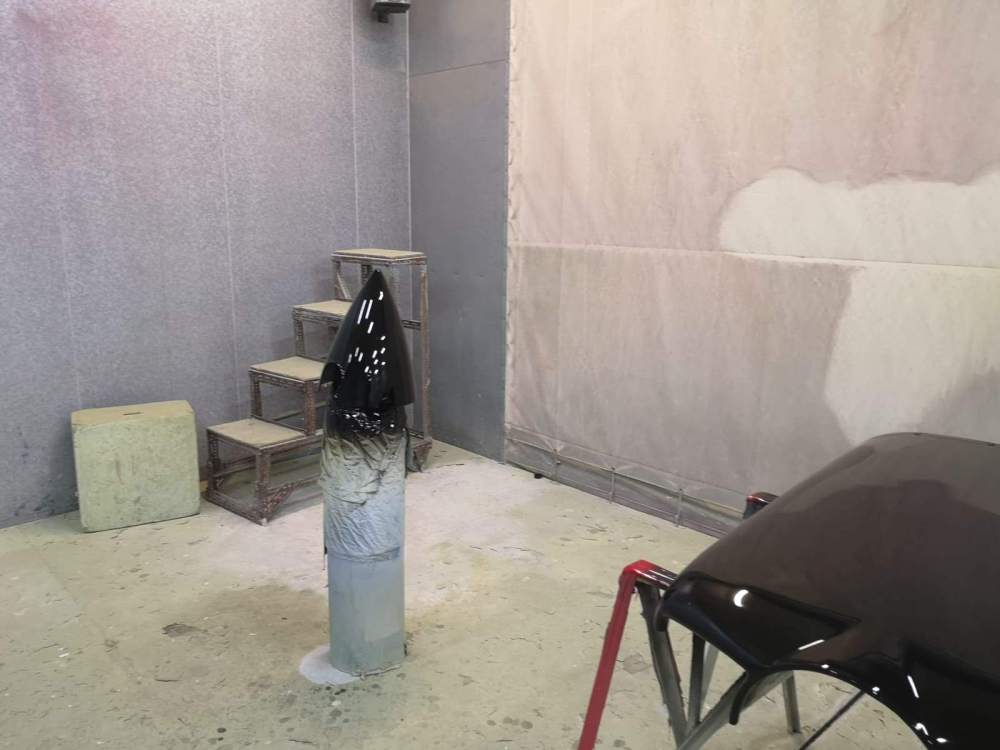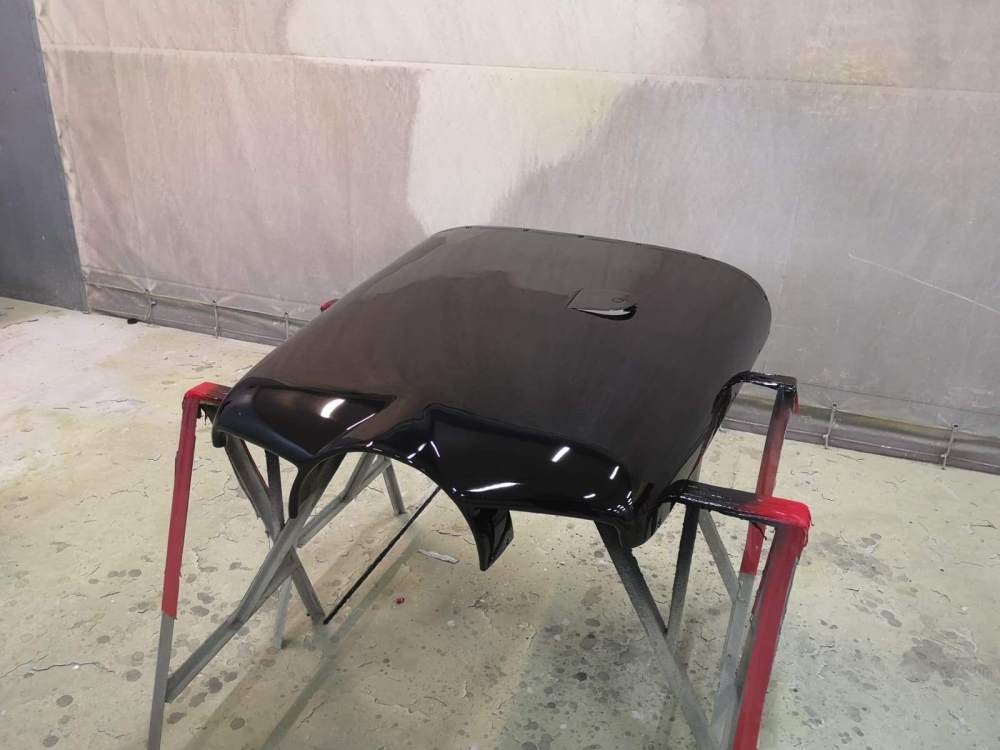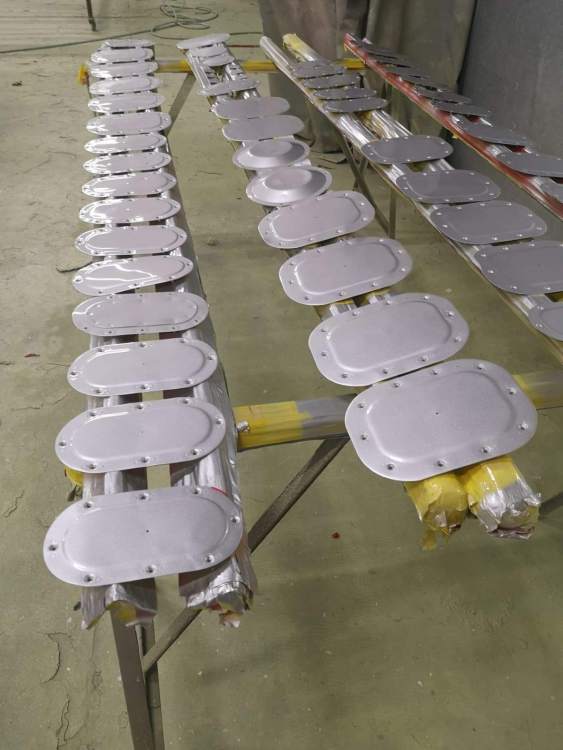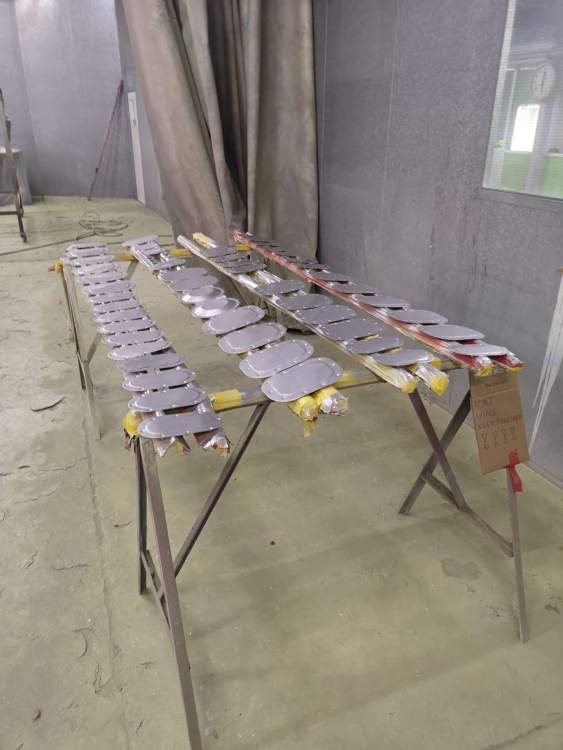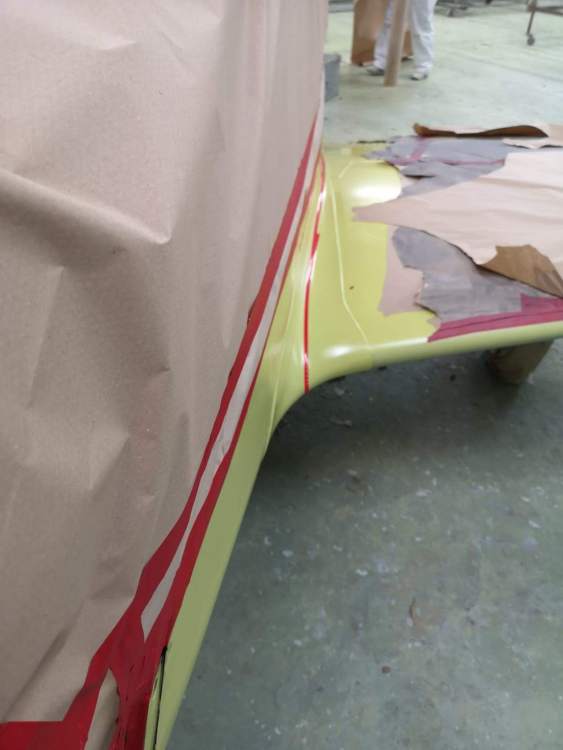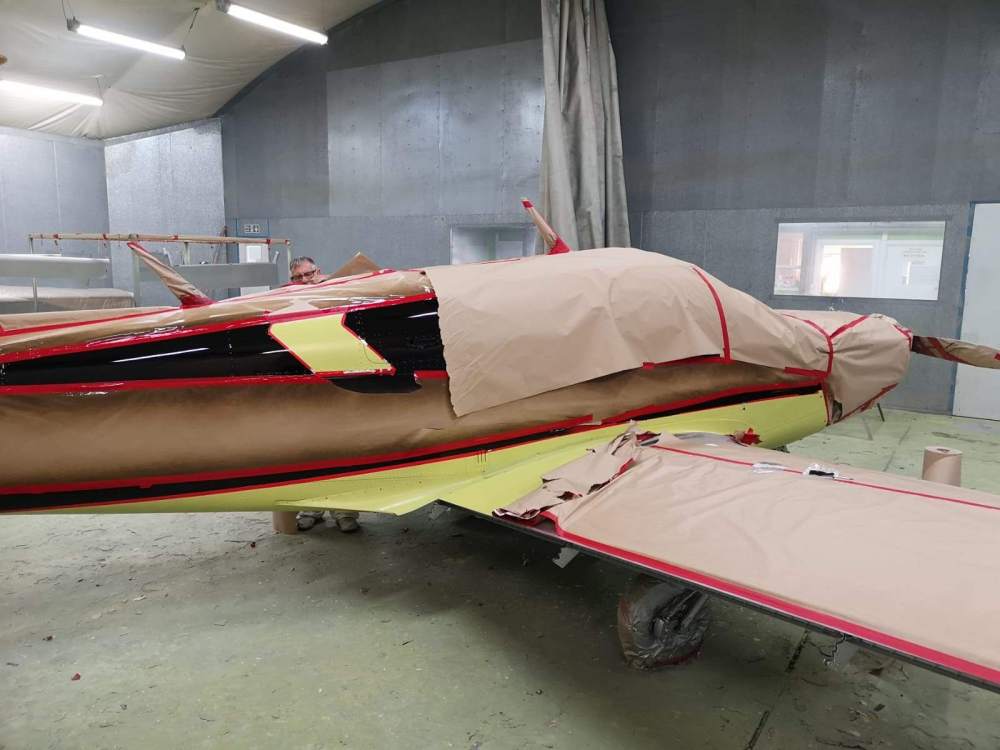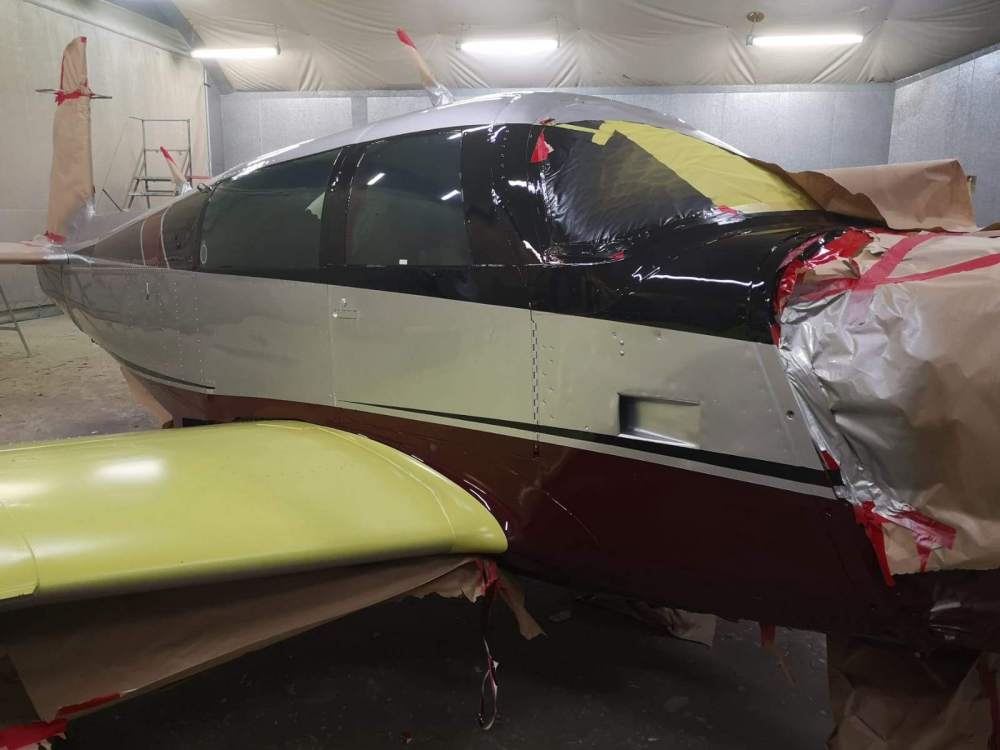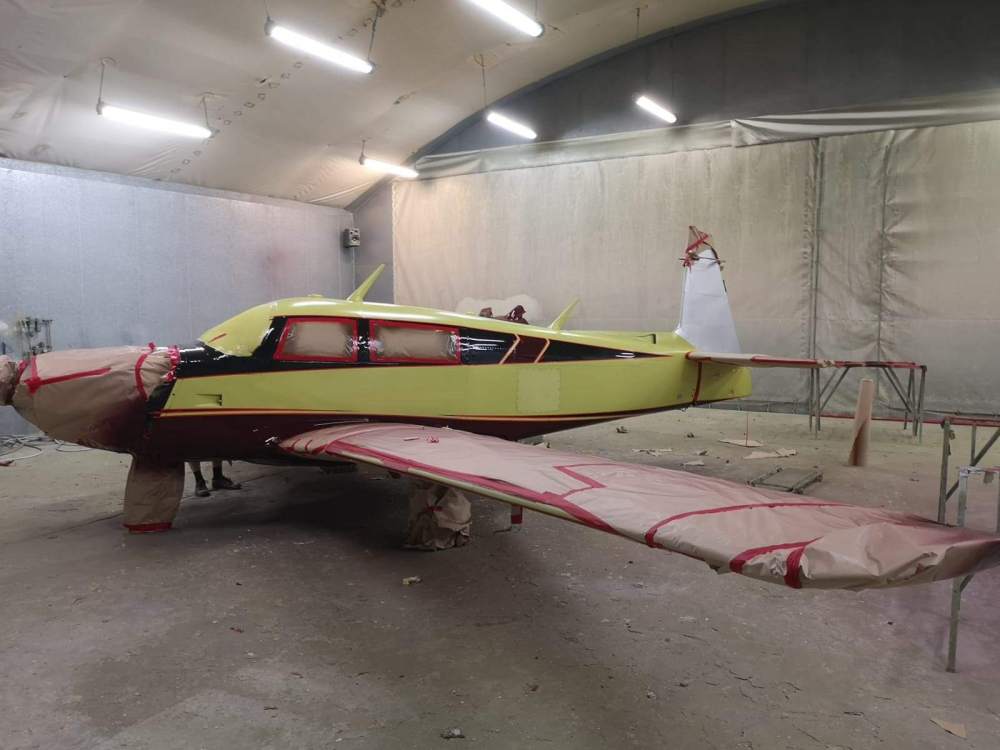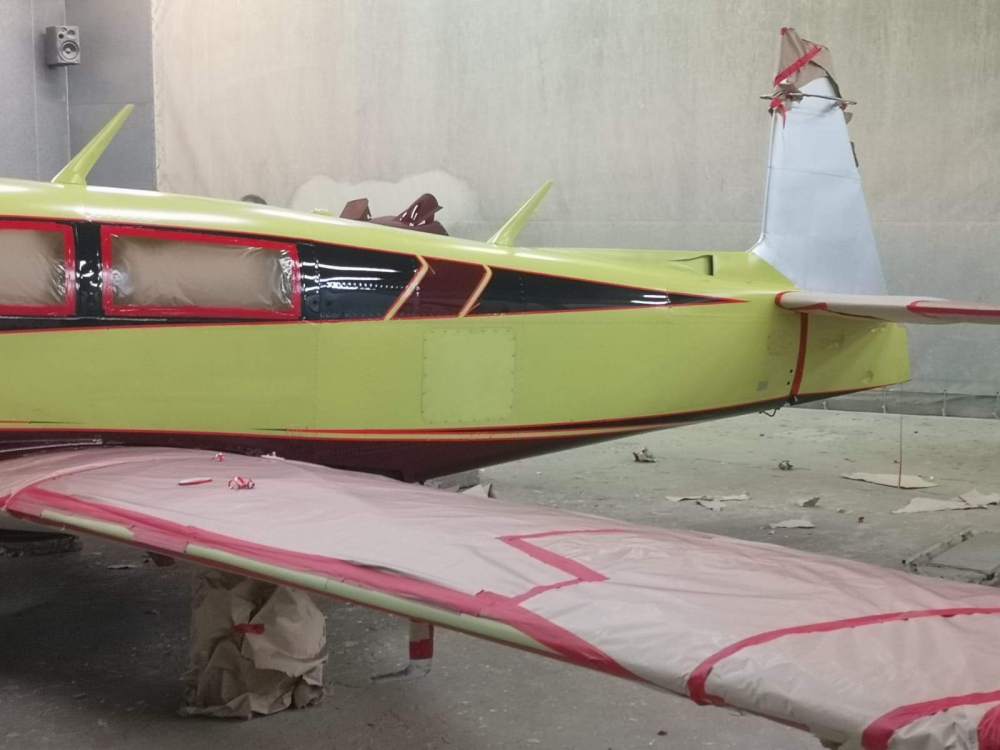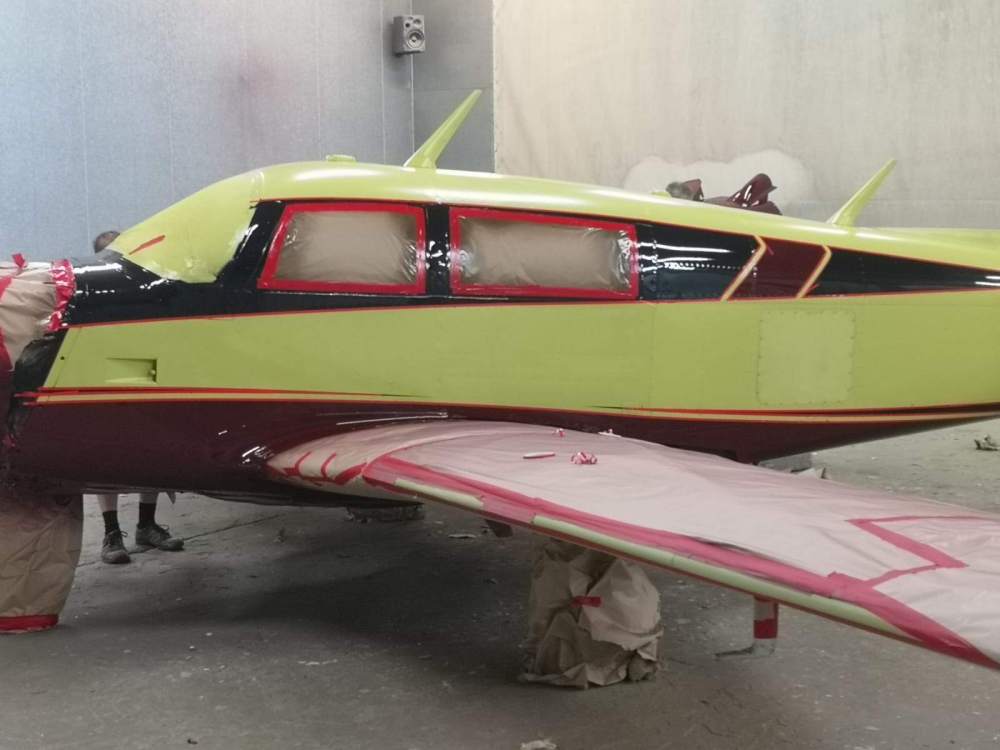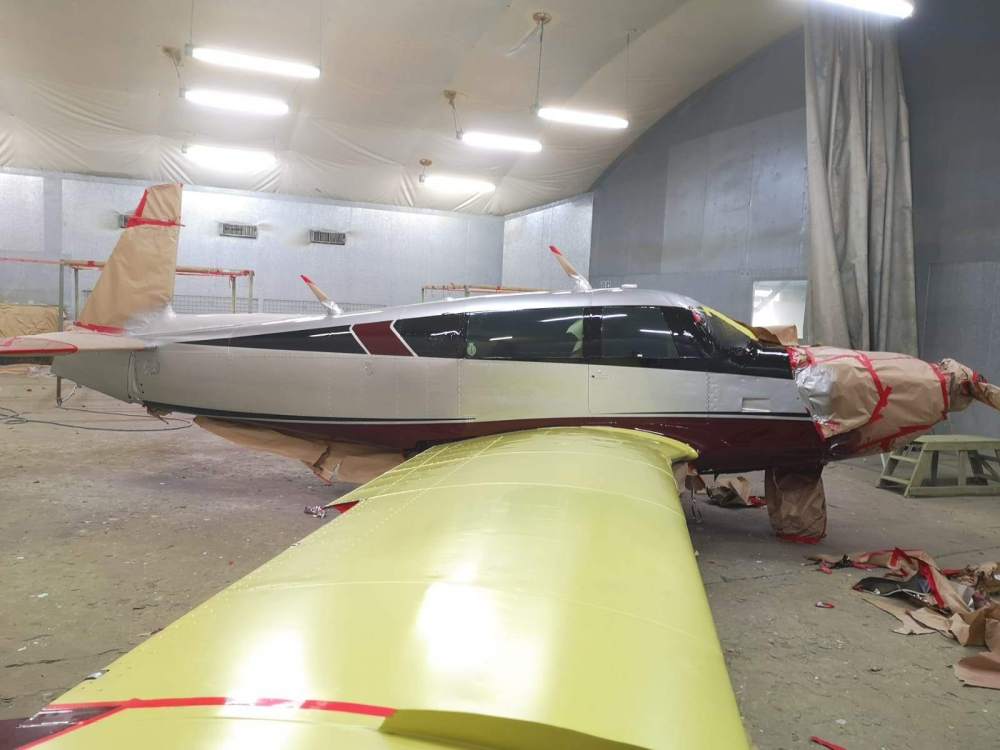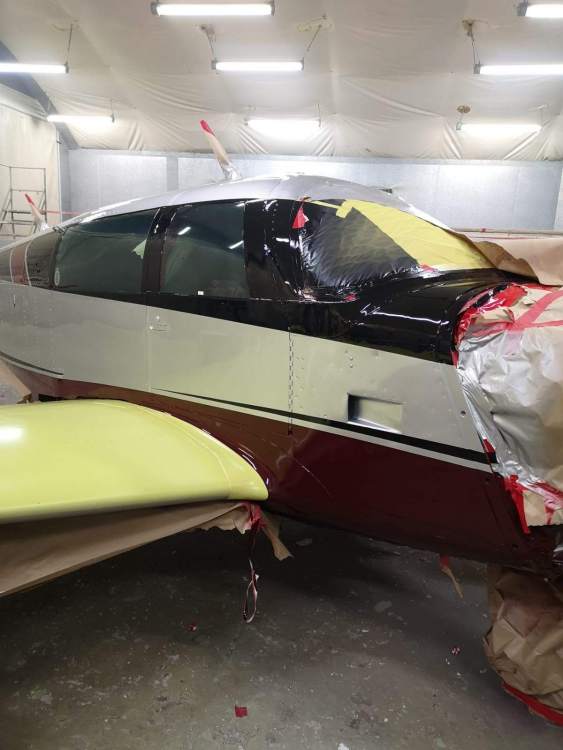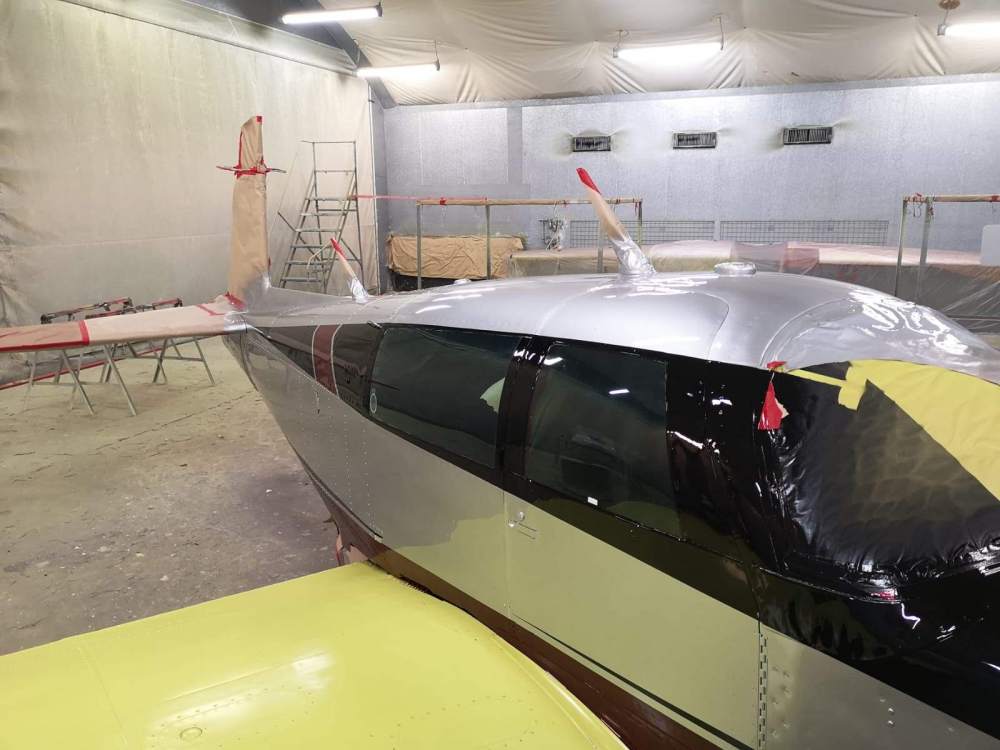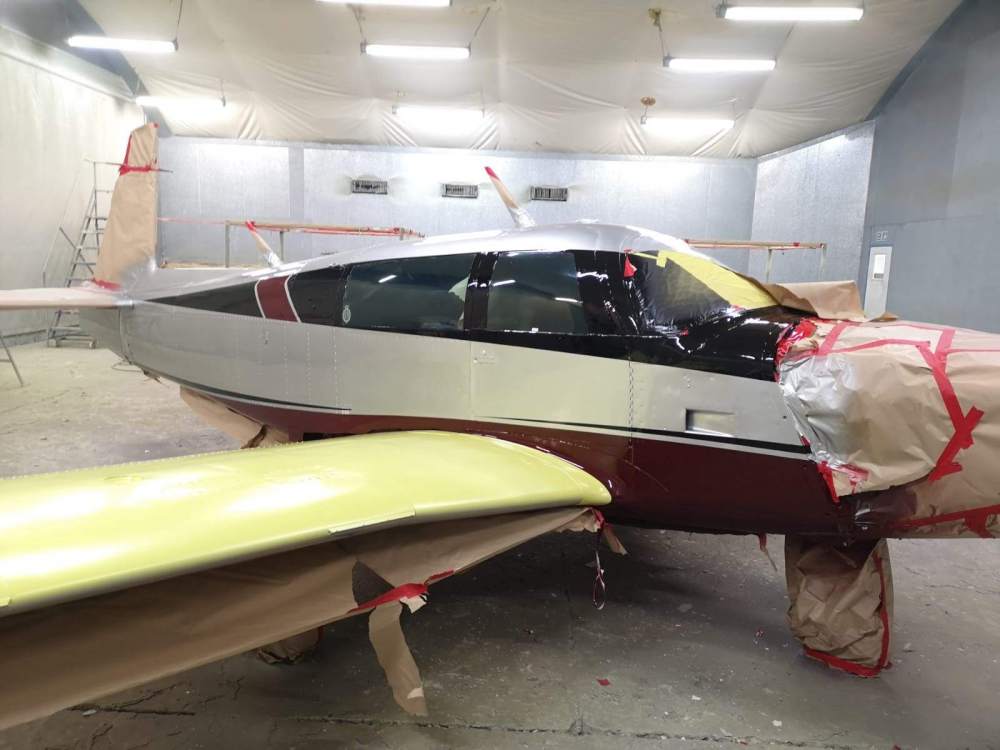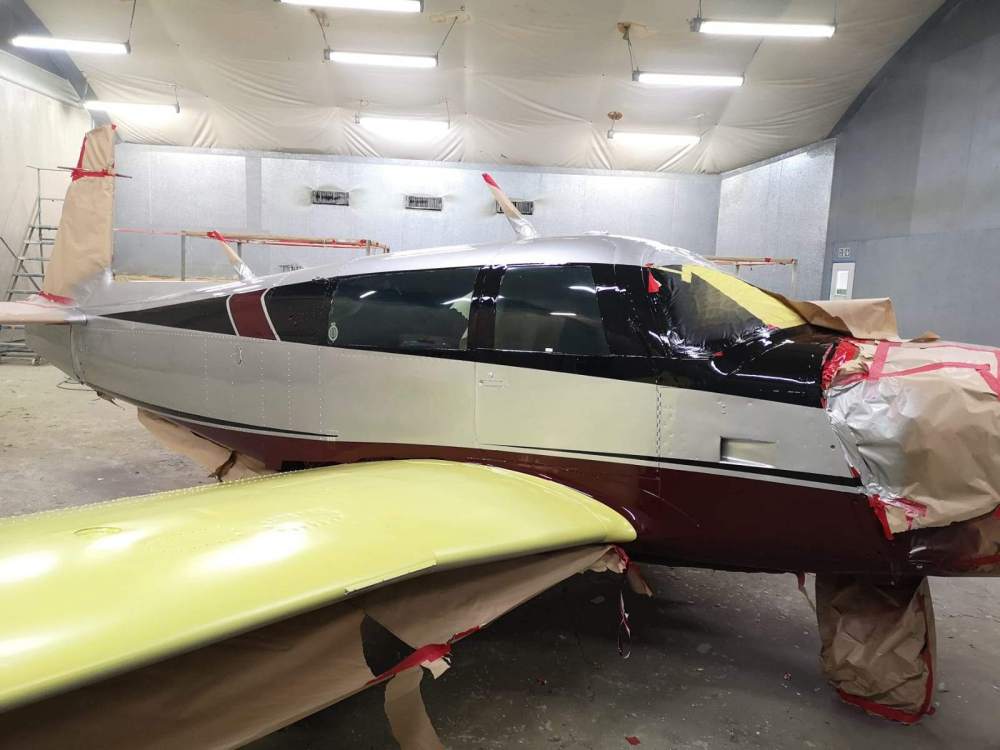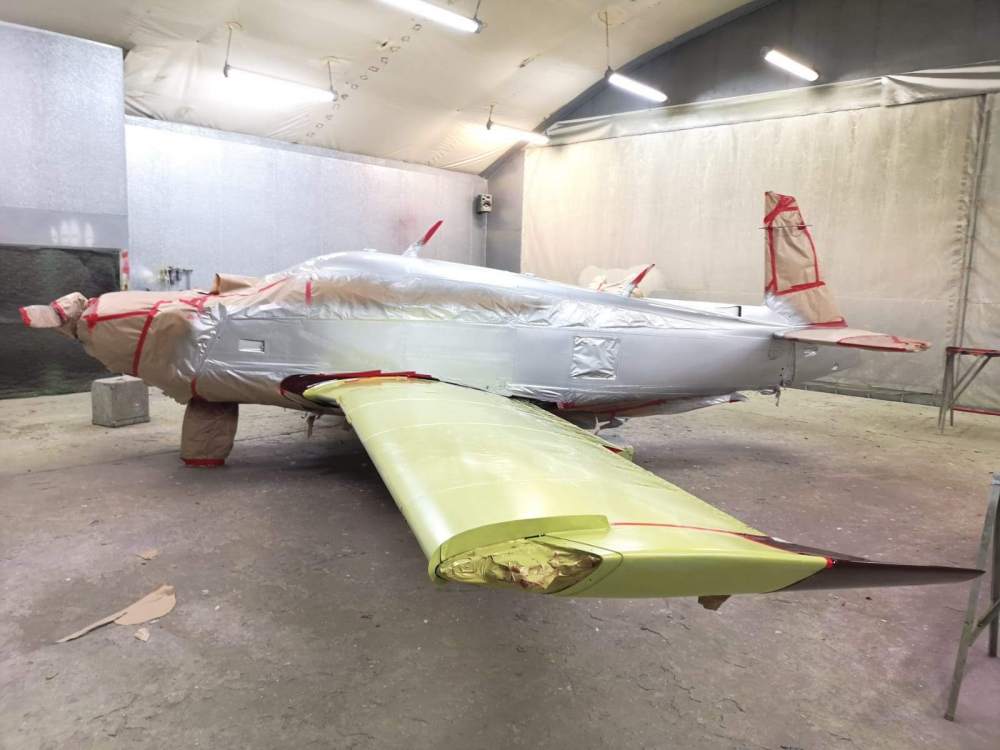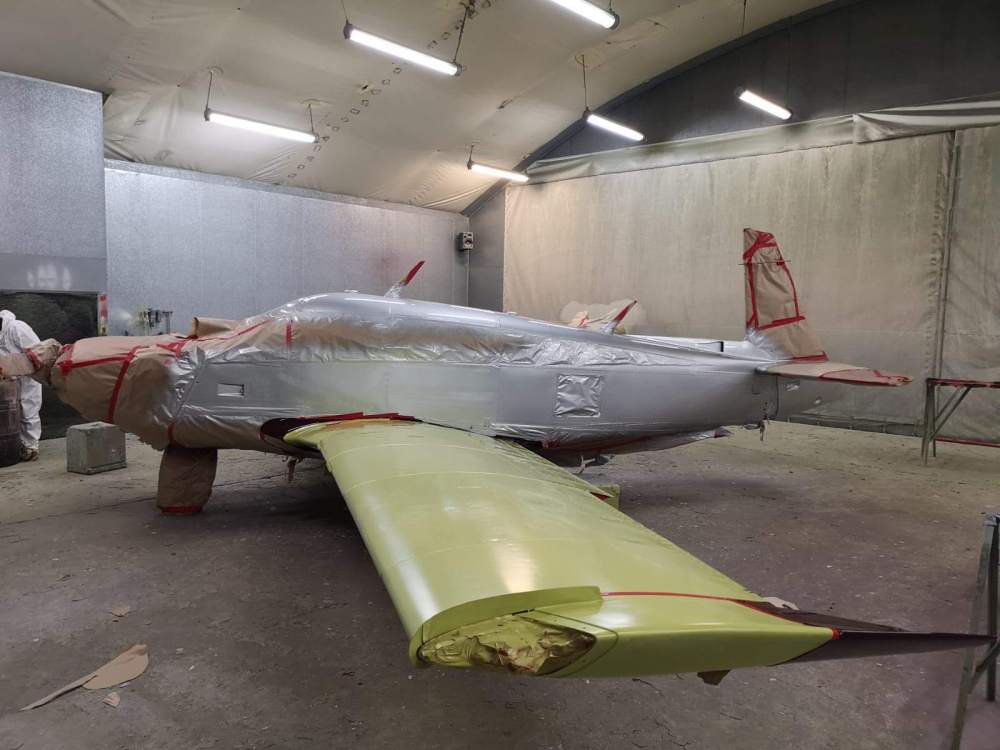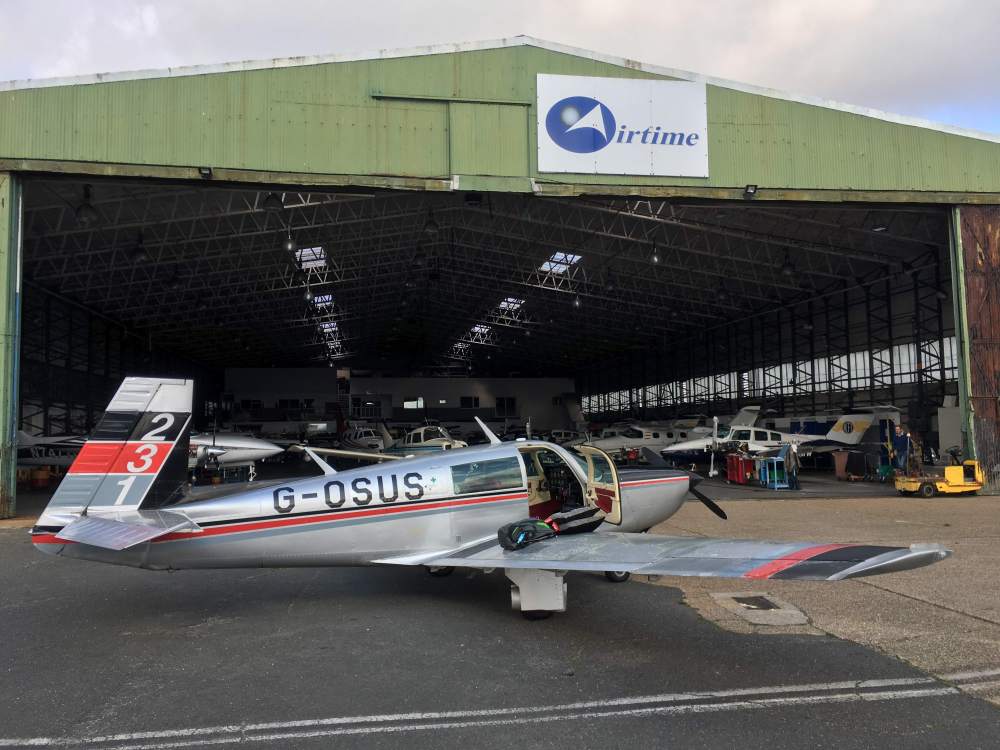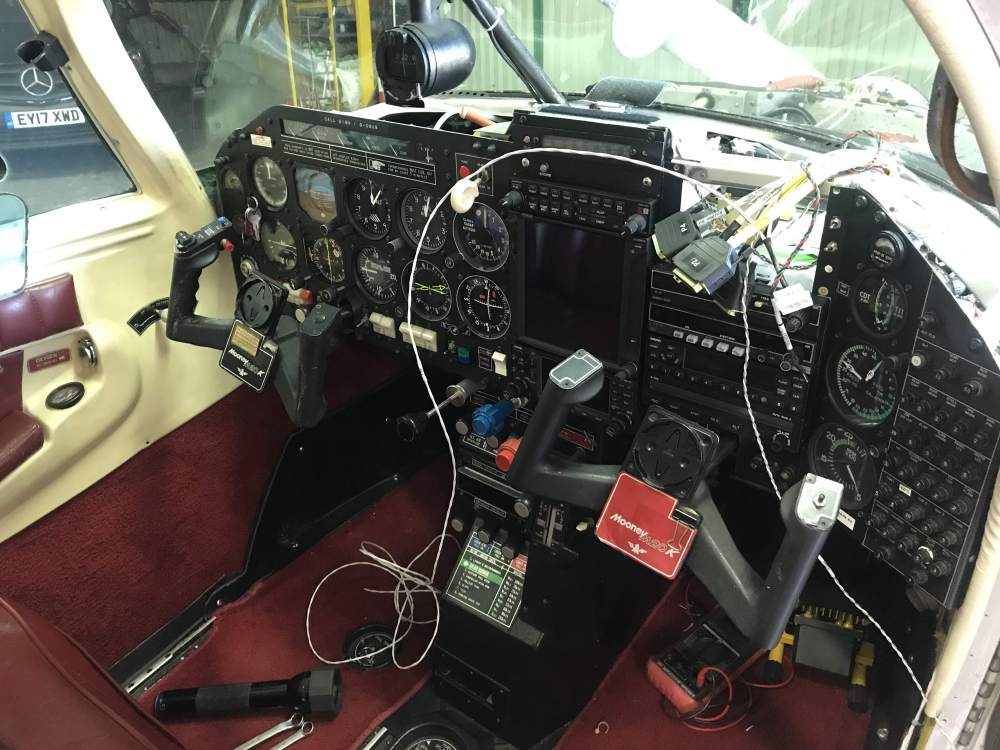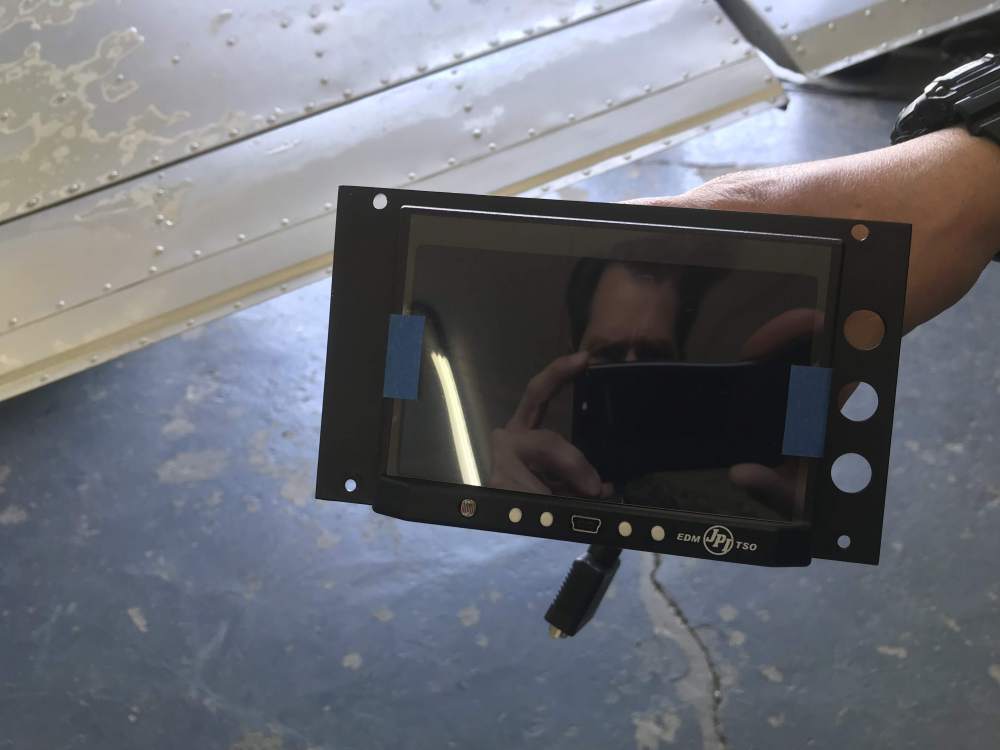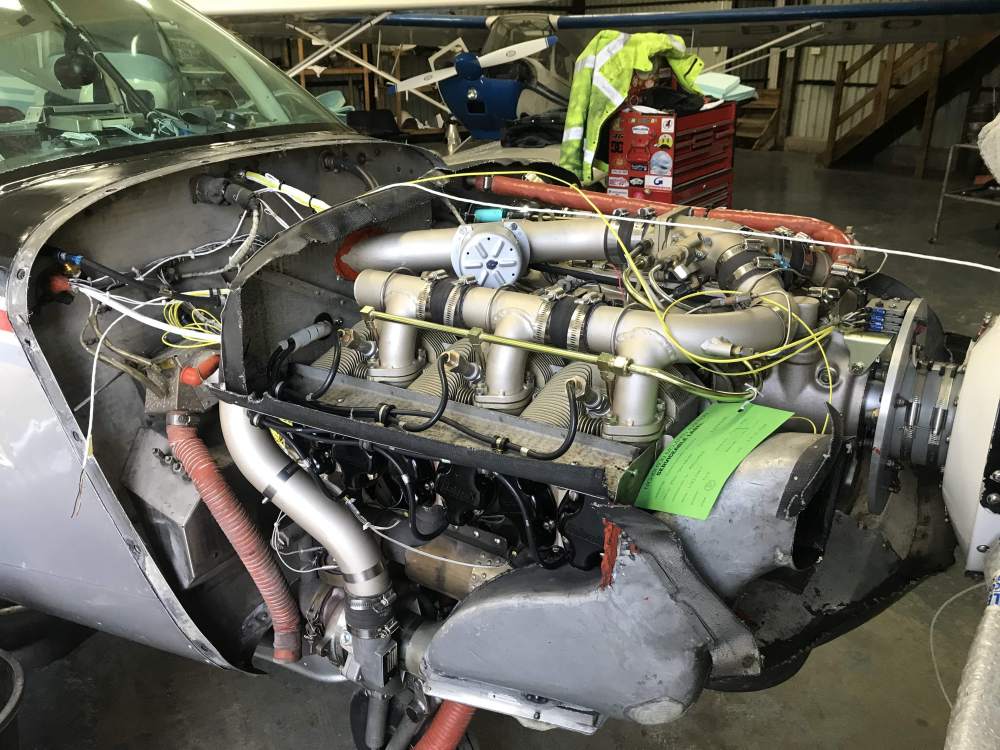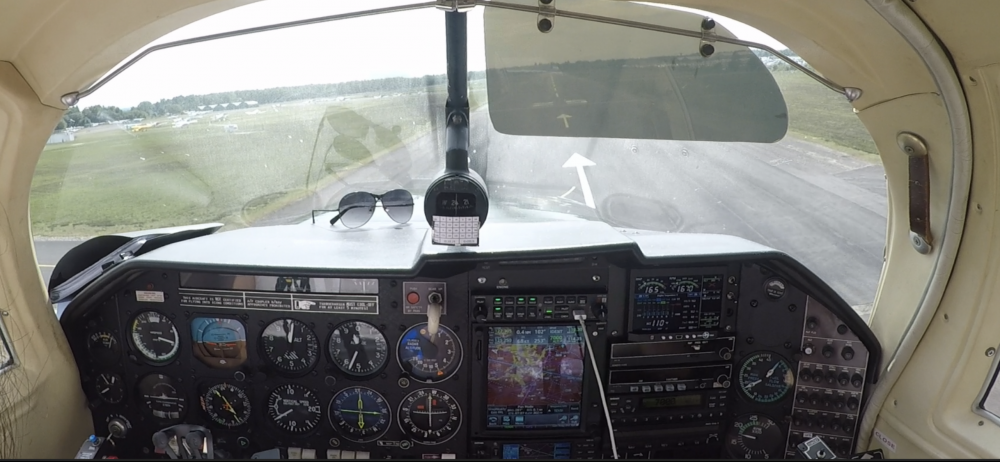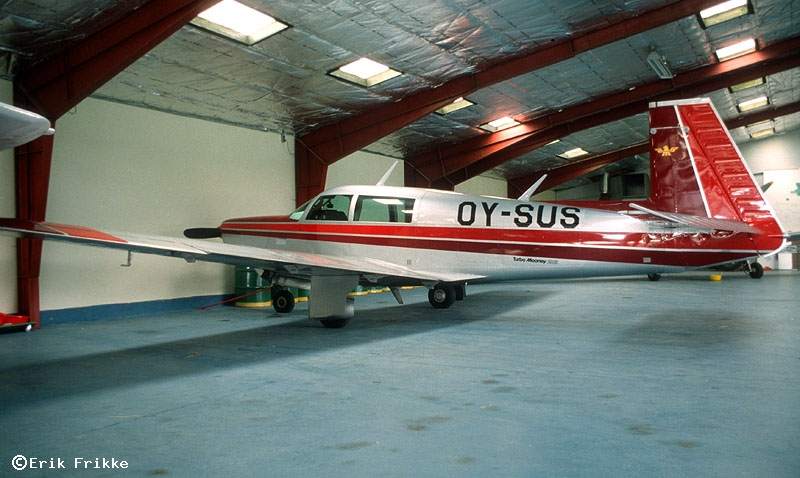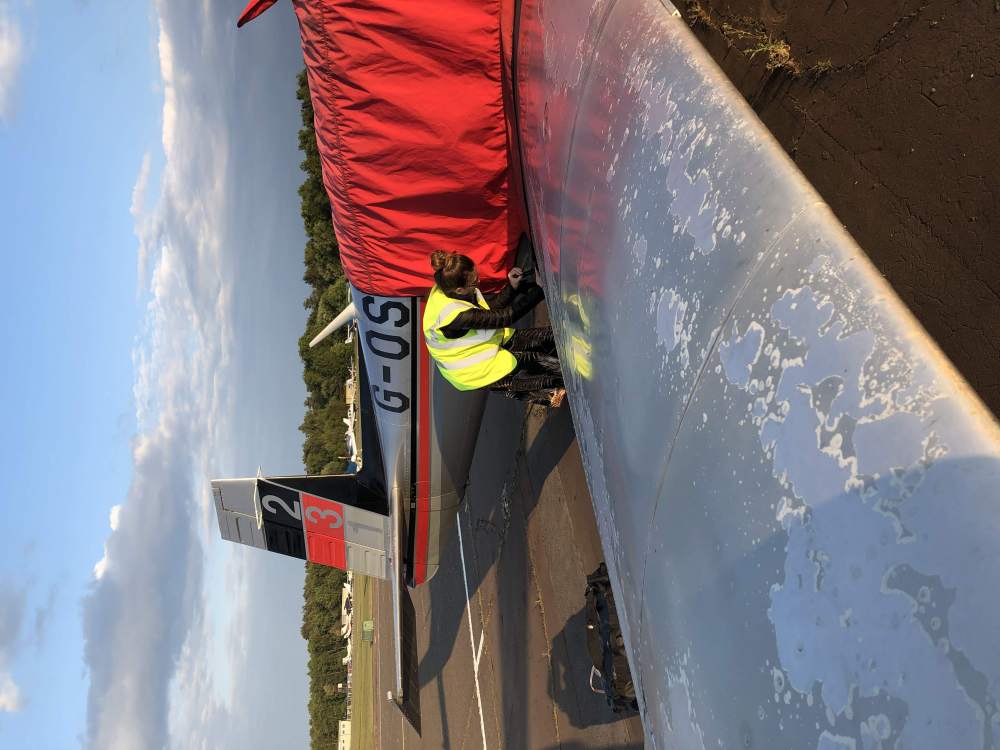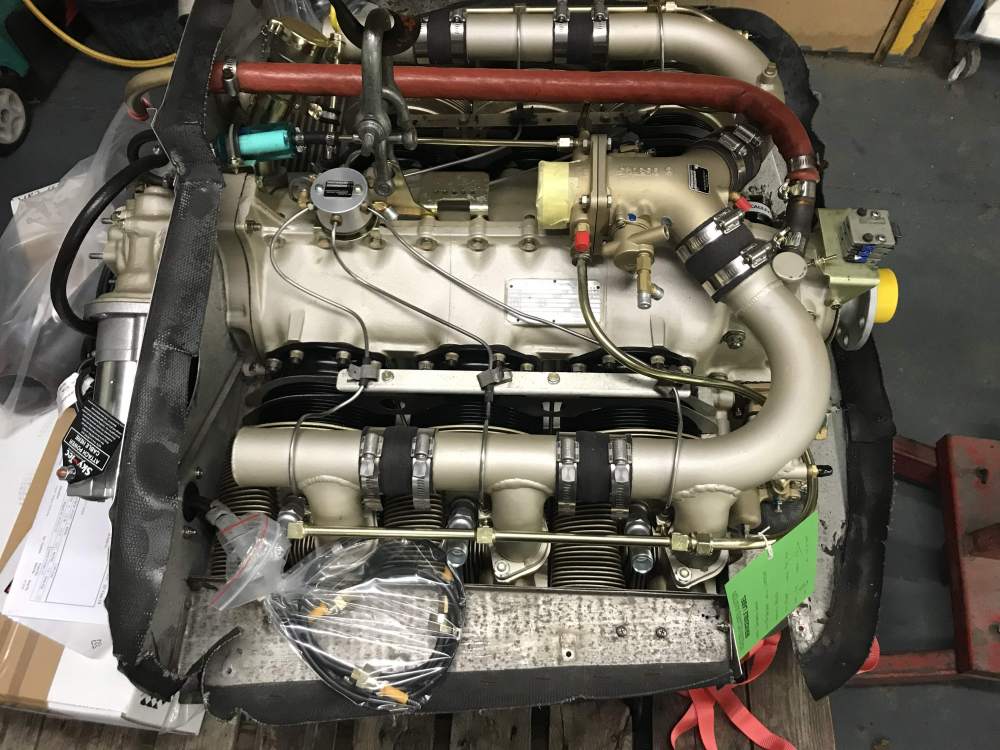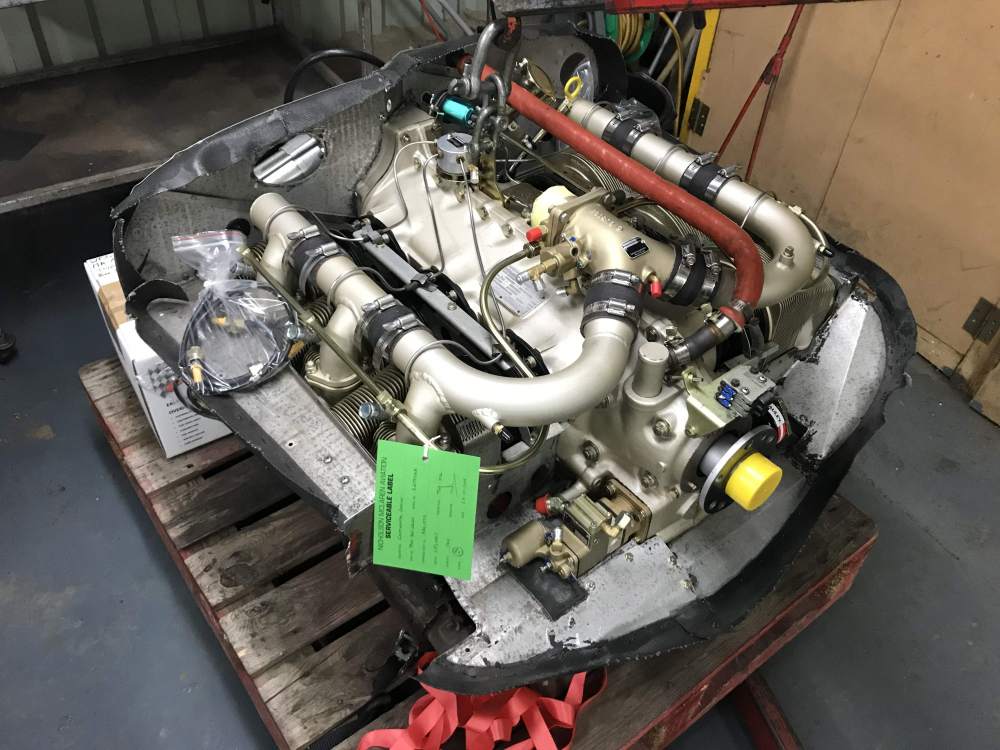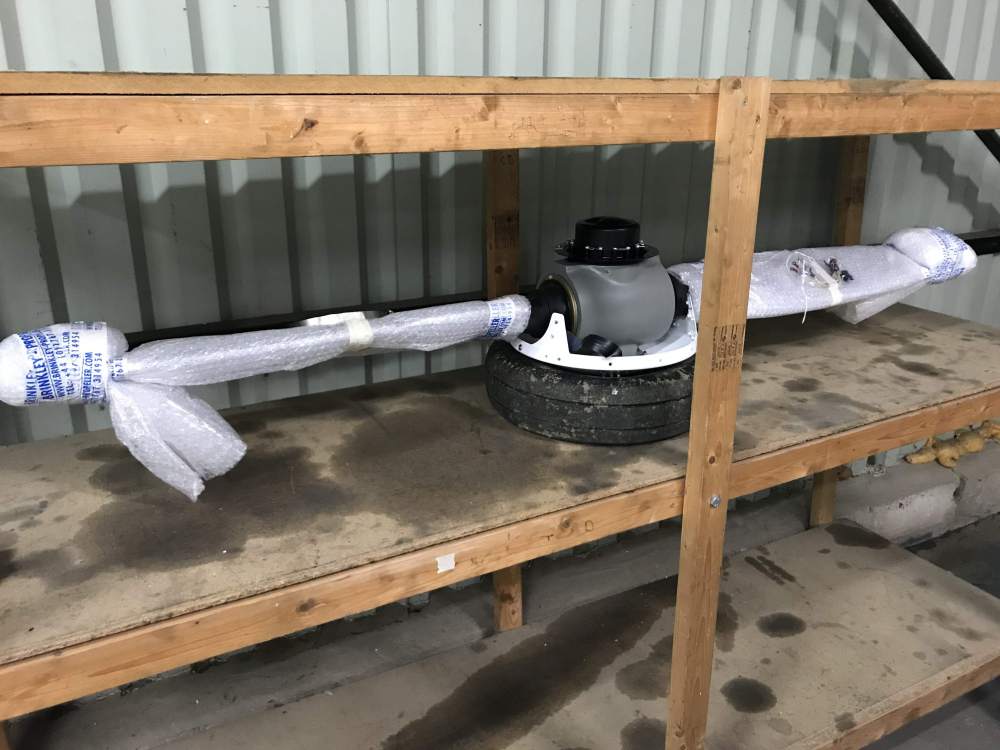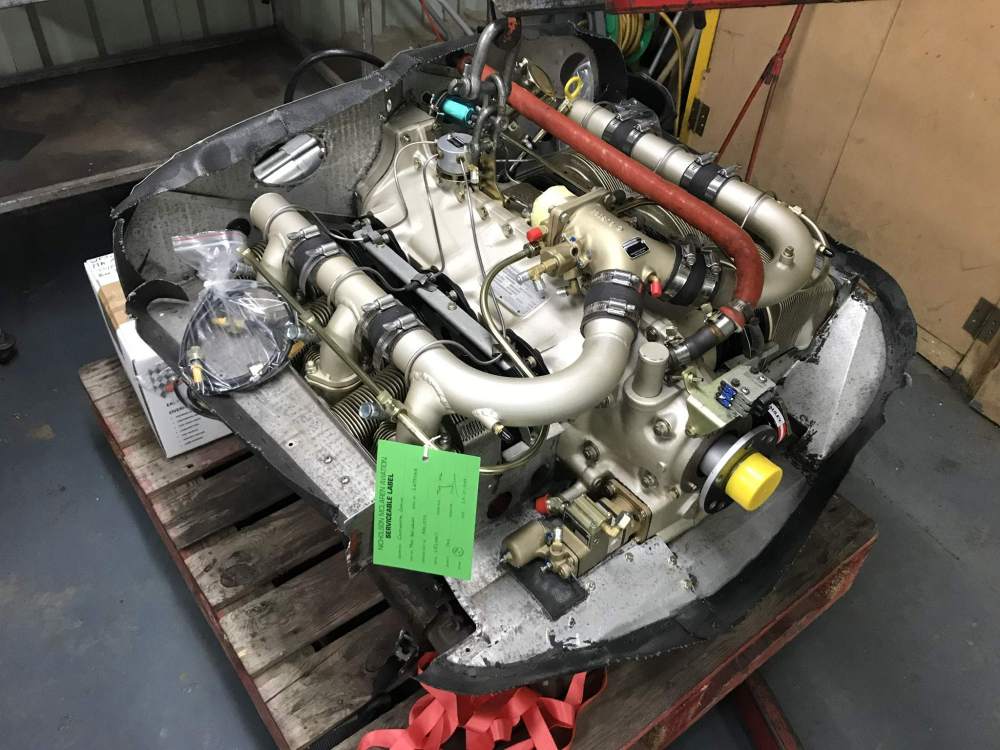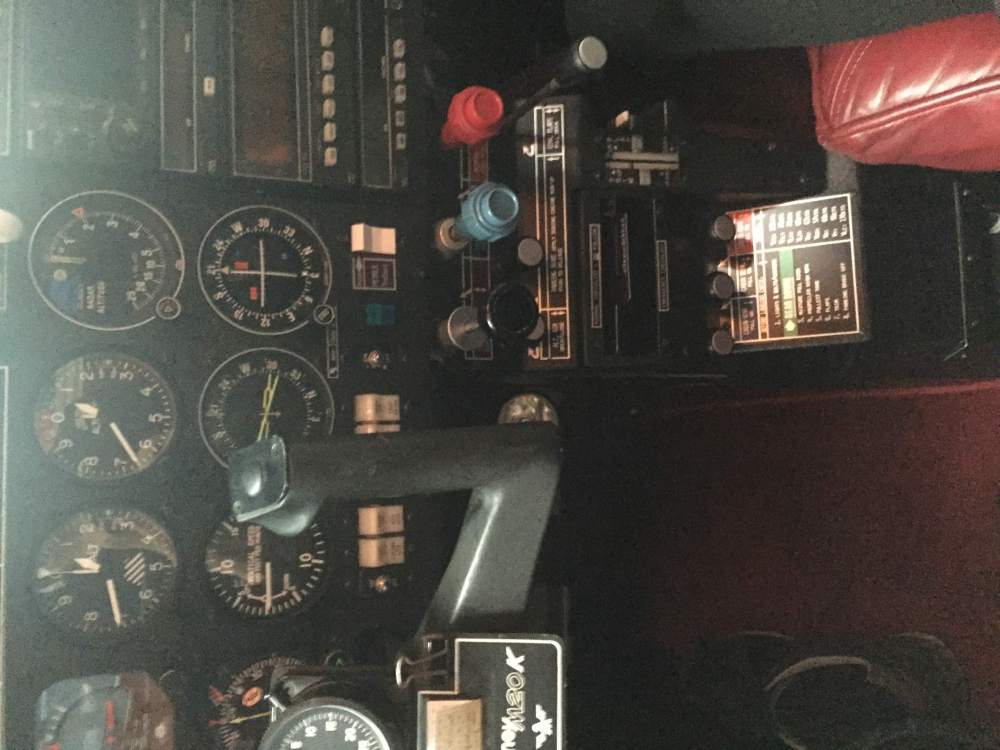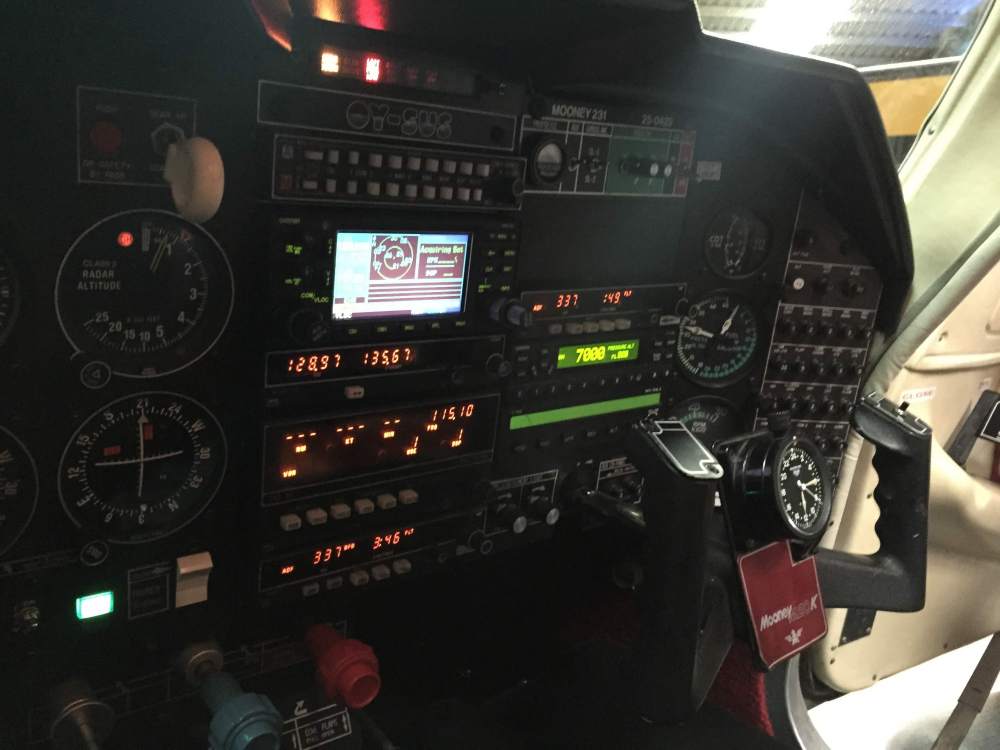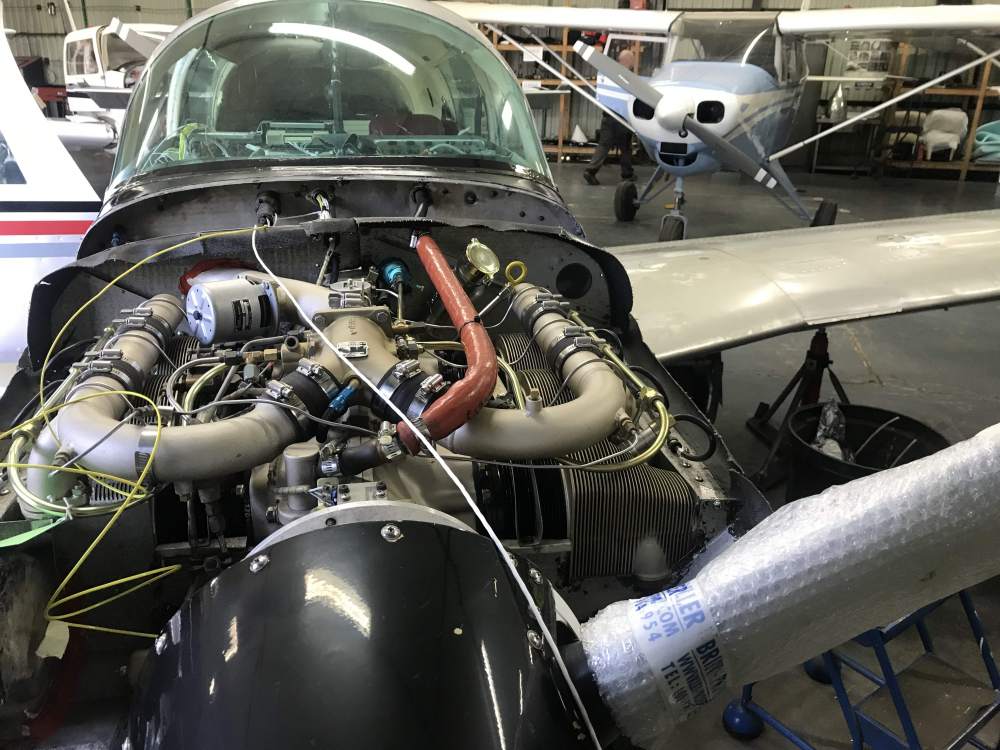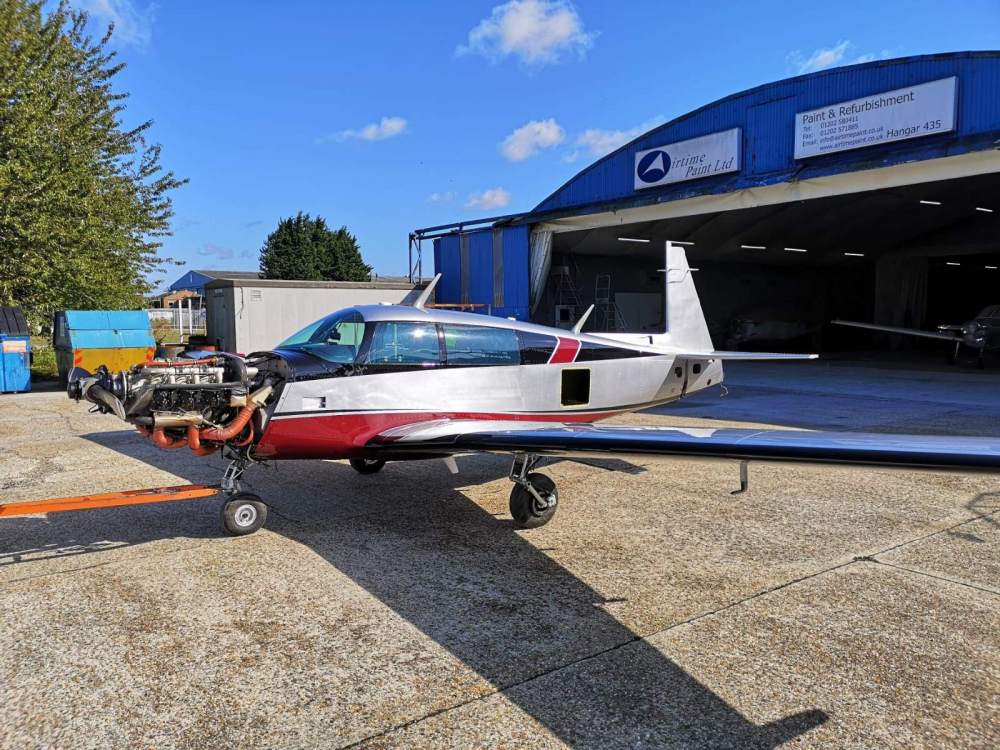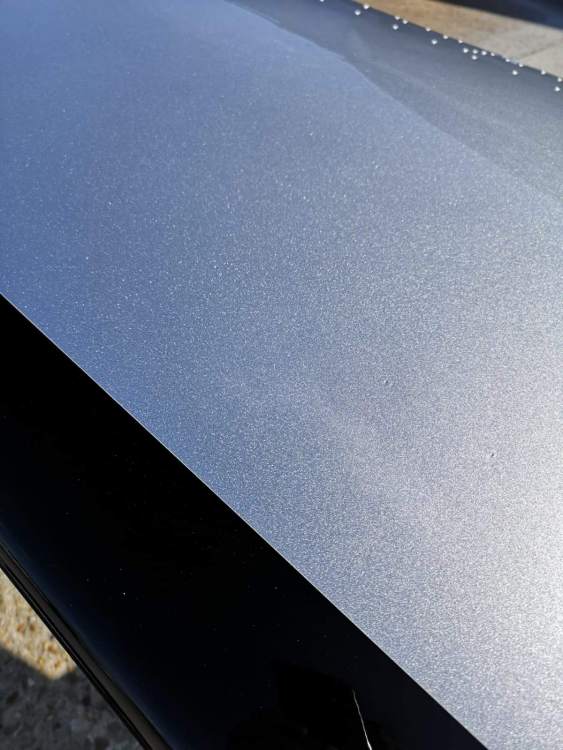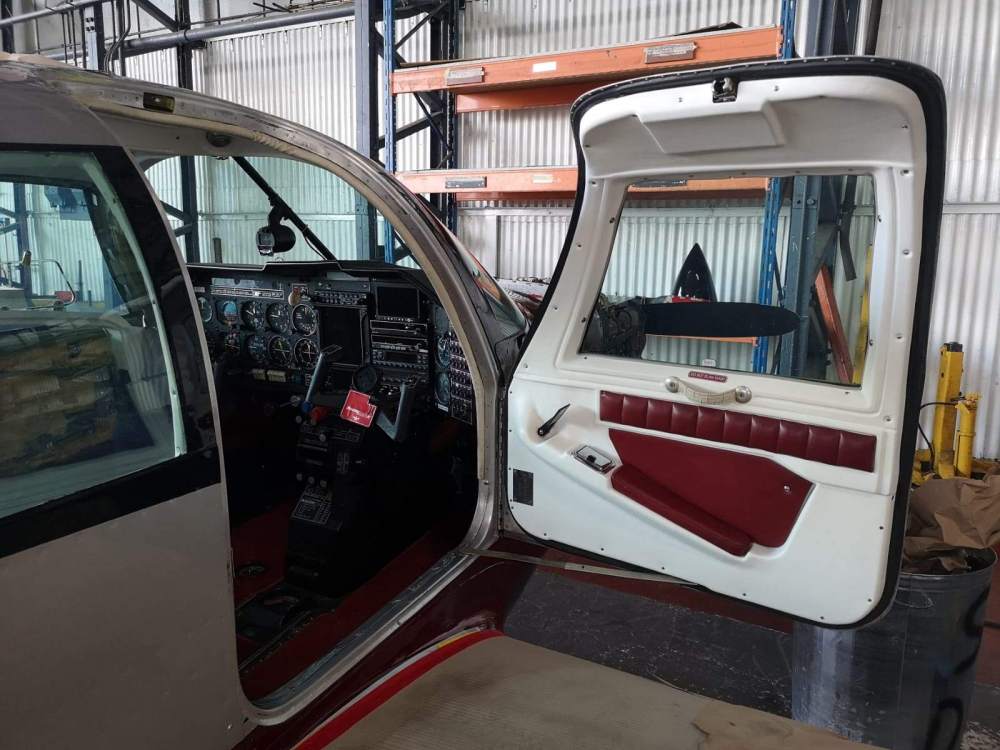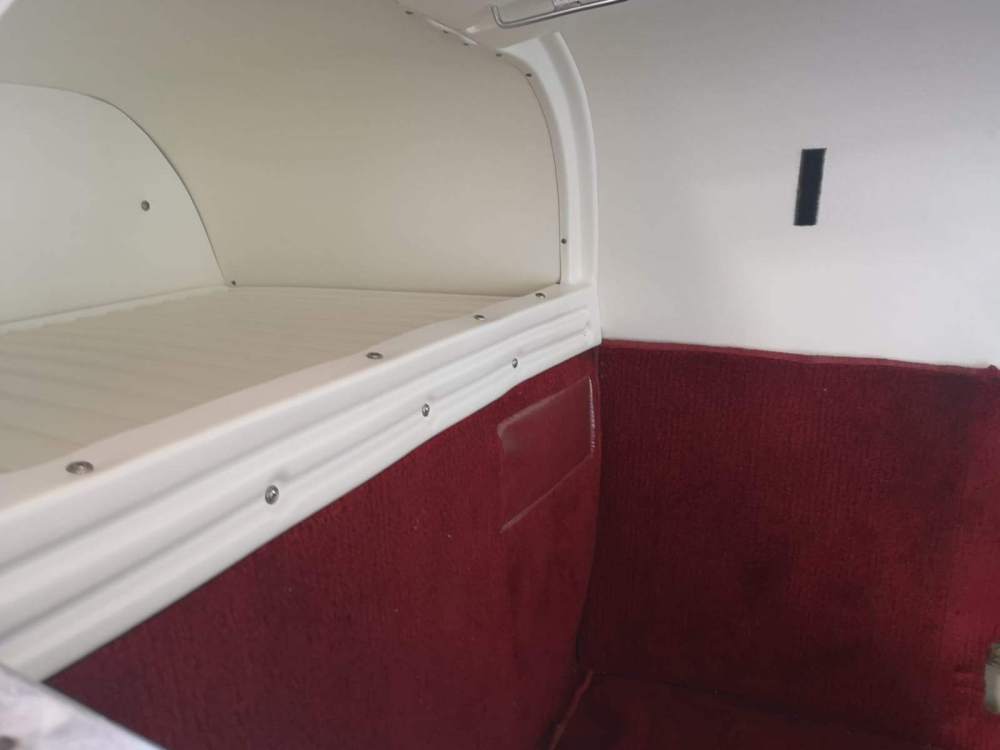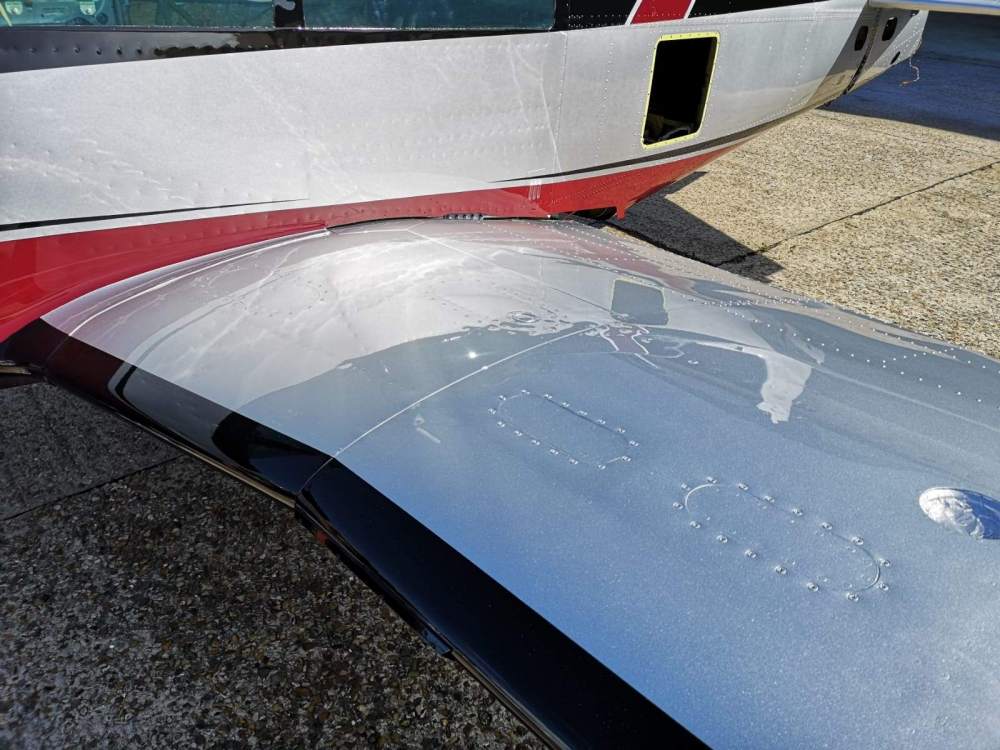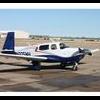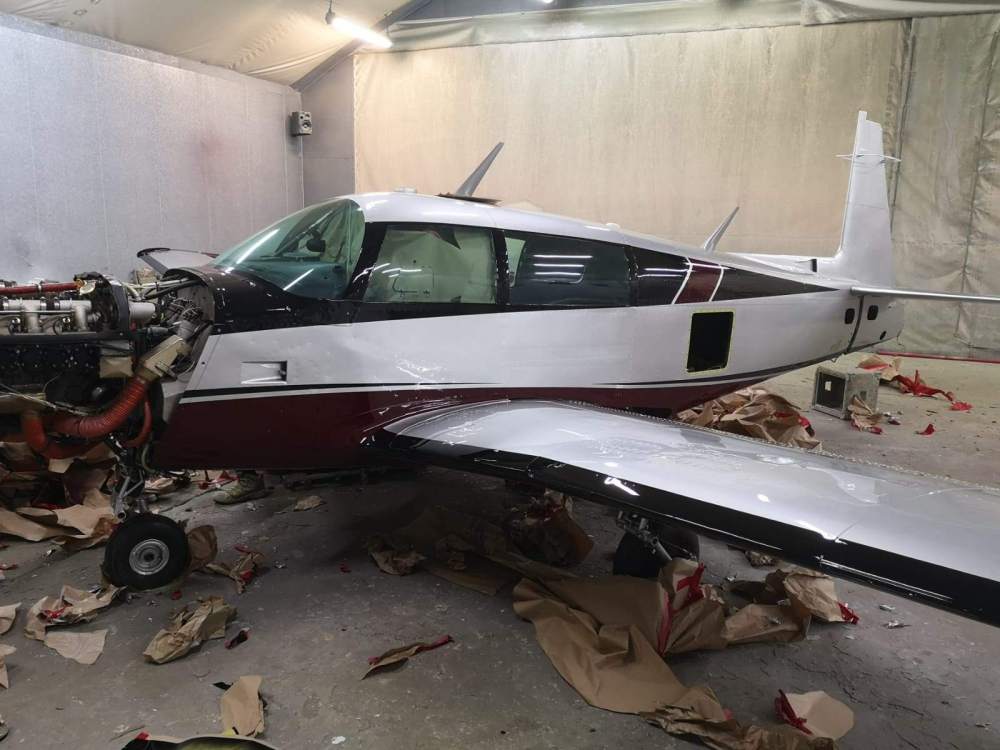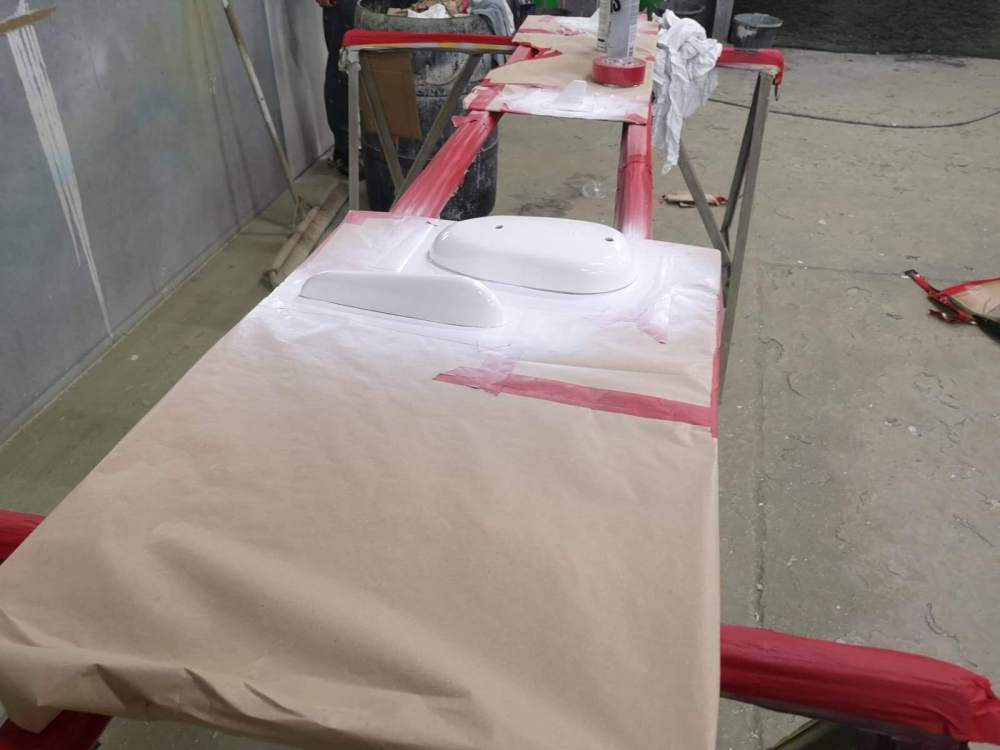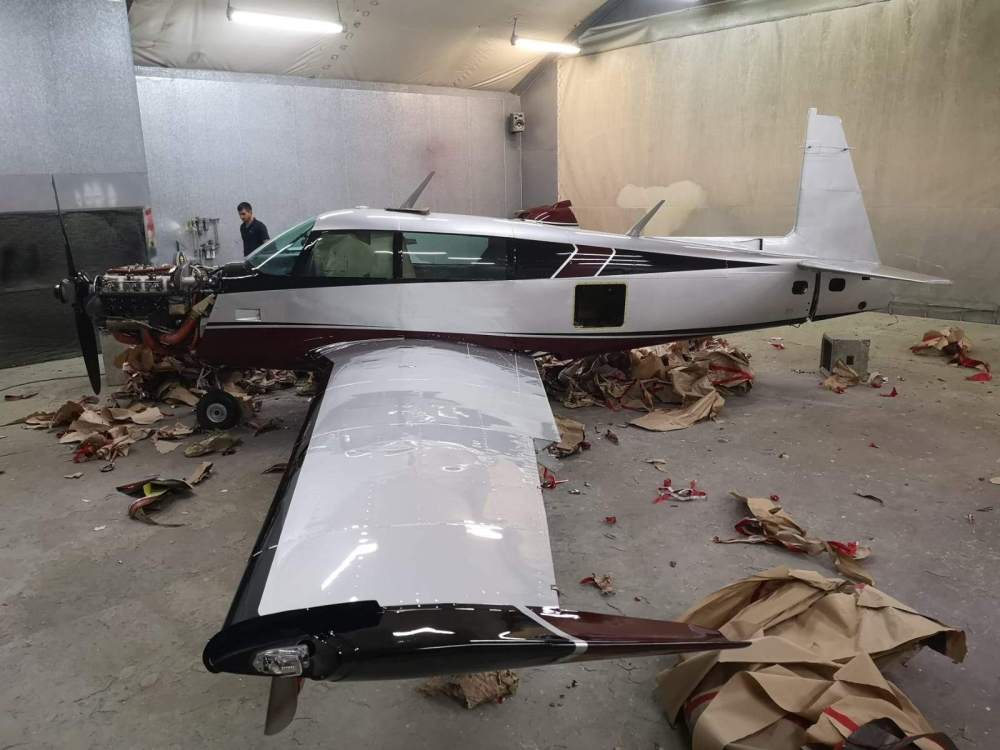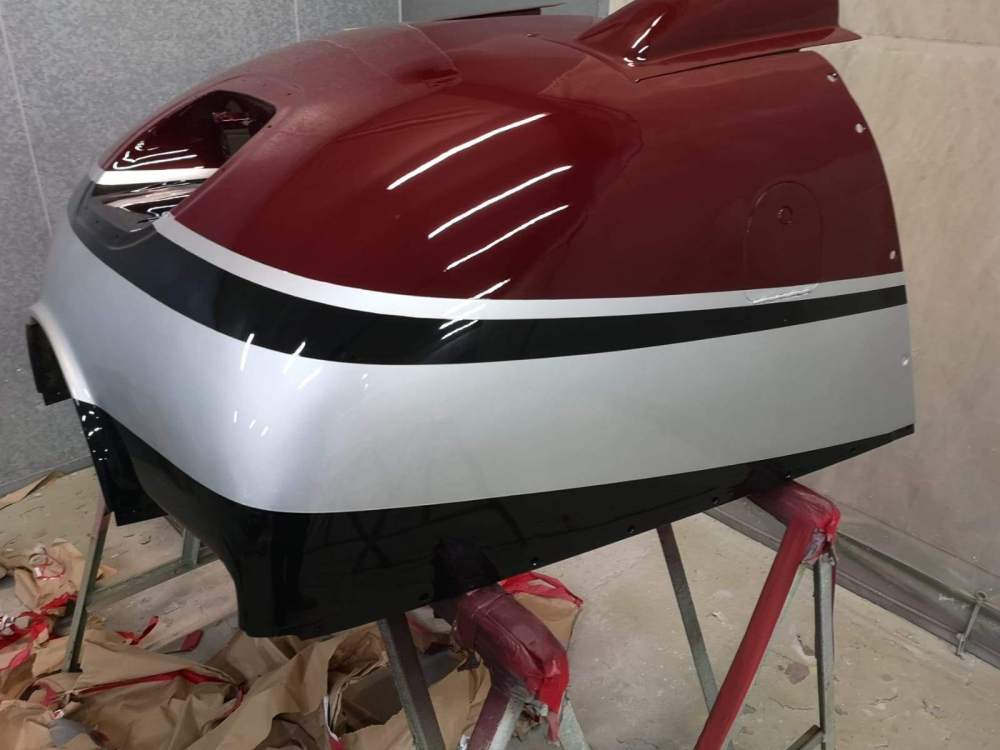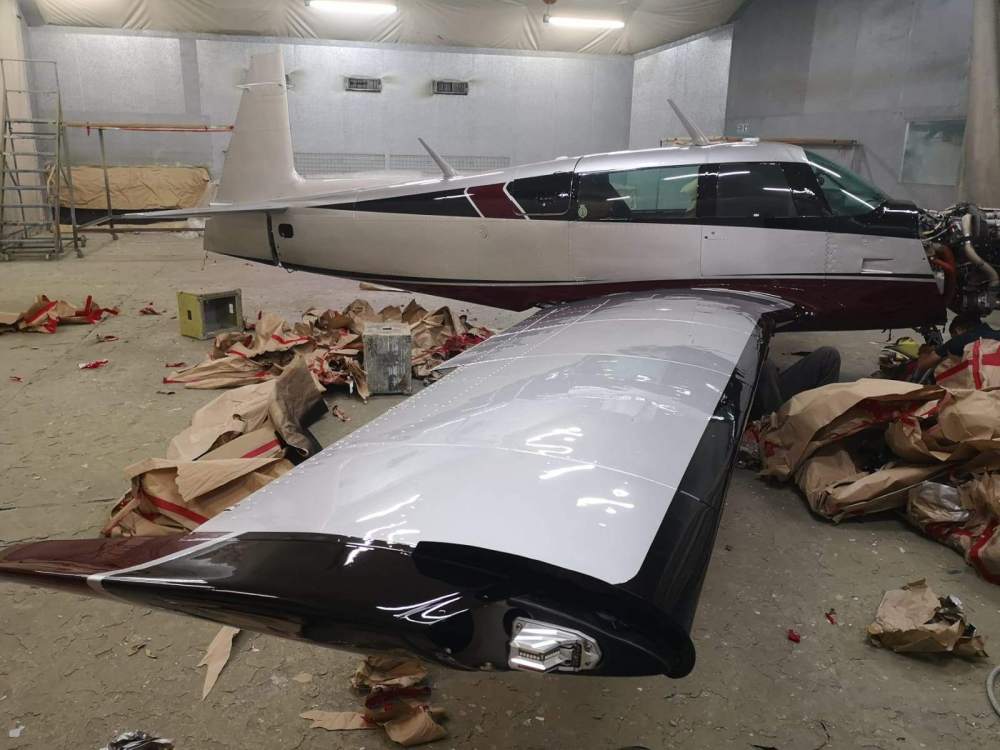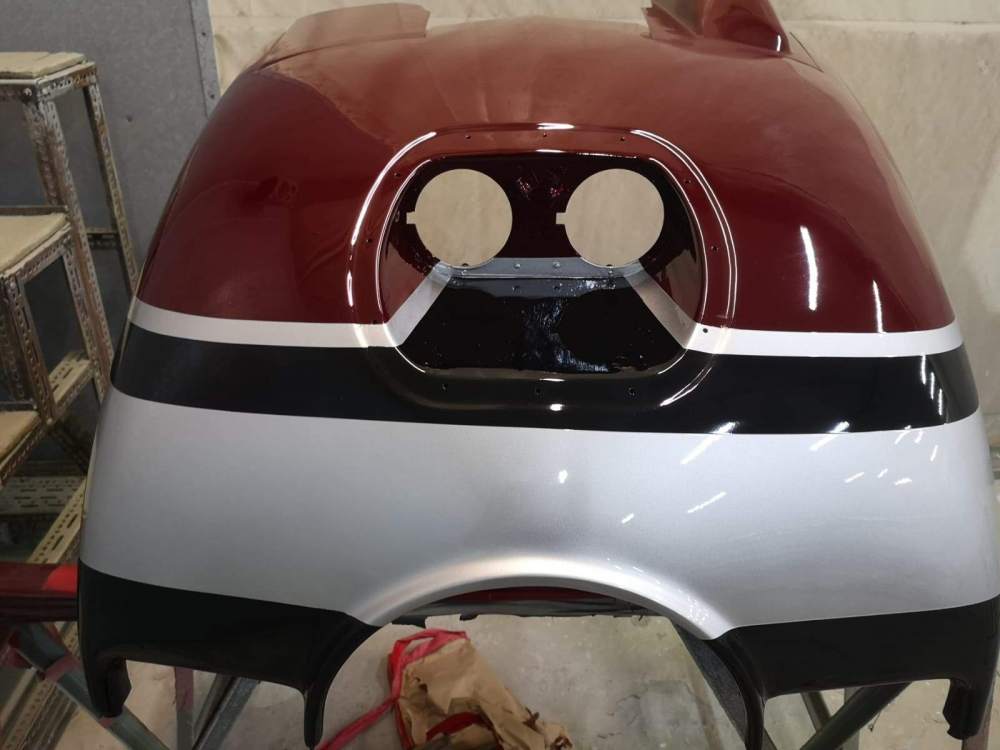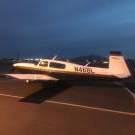Leaderboard
Popular Content
Showing content with the highest reputation on 09/04/2019 in all areas
-
Seats, headrests, carpet and most of the side panels done. Still need to do a little repair to two panels that's why all the screws aren't installed. Still have the windlace to install but I have had it with hot an humid. It'll be a cold day in...uh, where was I going with that? Several little questions, Dodd Stretch, owner of Airtex phoned me with an answer. Once, over the Labor Day weekend, by the pool with a drink in his hand. Terrific customer support. One of the questions was how to put a 12x8x5 block of foam with a 3x7 piece of sheet metal glue in it into the headrest cover. Can't be done. Dodd said just get it all prepped, put it in a garbage bag and stick a shop vac hose in the bag. Turn it on and it sucked the foam block down to about half size. Put it in the cover and turn the vac off. Rip out the plastic bag. I'm old and have seen some neat things. That ranked up there. Okay, maybe it was a slow week. In case you're wondering, the carpet is easy. Headliner, intimidating but not too bad. Seats were unexpectedly easy. Repairing the old brittle plastic side panels, then repainting, most of the time was spent here. Next job, instrument panel redo.3 points
-
The Dick Rochfort guideline for ATC communications: Tell them what you prefer Tell them what you will accept Everything else, tell them 'unable.' If I am polite and precise with my requests I find ATC will try to do what I want.3 points
-
I came out of New Garden about 15 years ago, with 1500' ceilings and had filed an IFR clearance........ then direct to KIMT, on a Sunday afternoon (Yep, I know...... I didn't actually think I was going to get it). SO, the FBO is closed, no payphone (they had them in those days) and no cell coverage. So... I launch VFR and attempt to pick up the clearance airborne. The Philly controllers response was priceless. "You actually think I'm giving you an IFR clearance, DIRECT, AIRBORNE??" "You should have called me on the ground". I explained what I just typed above and he came back with "the best I can give you is VFR flight following". Yippee 100+ miles west before ceilings go up, stuck at VFR 1,000' AGL. A few minutes later another controller comes on, clearly a supervisor, and asks if I'm ready to copy an IFR Clearance (I swear I could detect some cynicism in his voice too). I said yes and he rattled off a really fast clearance with at least 10 way points before getting over mid-Ohio, then direct to KIMT. I read it back to him twice as fast as he read it to me and got "read back correct". At that point he probably realized I knew what I was doing, but just had no clue what to file for routing since I was from the upper Midwest, and totally unfamiliar with that area. In less than 15 minutes, the same controller came back with "cleared DIRECT destination". I guess I had served my suspension in the penalty box. Tom3 points
-
Slipped to Rocket Into Gaston’s this weekend. Getting in Consisted of a RNAV 22 at FLP to get below the Clouds. After that it was no Issue at all. Getting Out was a little more of an eye opener though. I am use to a F Model going into an out of Gaston’s, which done great on the way out. Advancing the power in the Turbo Plane much slower put me further down the pasture before it really woke up(32+MP). Once the engine woke up an the wing got happy, it was no issue at all. Will definitely do it agin. Any added information on the October Fly-in?3 points
-
Dev - I know you are relatively low time IFR pilot and it is hard to be in an "analysis mode" when you have a heavy workload. When I brief an approach plate, I am telling myself what I should expect coming from the direction I am arriving from. This helps with the mental preparation if things go sideways. I have seen far stranger things from controllers. They are human. The advice you are being given is correct -- "ask". My favorite Philly story is calling approach control for a clearance on the ground out of New Garden. The controller gave me a circuitous route heading east about 40 miles east before going to the westerly direction I needed to go towards. When I got in the air, the controller asked me if I was on a IFR training flight and why I was flying so far east when I intended to head west. I felt like saying "because you're the knuckleheads that gave me this clearance" but instead graciously accepted a due west waypoint. This stuff happens. With experience you'll learn when it is important to ask for clarification or what you want and also know that there are times, short of declaring an emergency, you ain't going to get it.3 points
-
I was quite surprised at how light electric step actuator is and simple it was to install. For grins I wanted see what would happen if turn off the beacon in flight at 120 mph IAS (max gear extension speed) and at 130 mph no problems. I outfitted the step temporary with a string potentiometer (so I knew position of the step by it's resistance) and then mounted a gopro facing aft. I used an aluminium plate drilled to match the existing inspection panel. So the plate mounted over the existing inspection panel with bolt for the camera to verify the step position. A bit over kill and mainly because I could. Sort of a pointless experiment but I get a kick out of irritating and annoying non technical bosses at work. you would think working aerospace industry I might get critique. James '67C2 points
-
I fly with an O2D2 system in the Mooney and an original EDS in my glider. I am biased because I am friends with the the founder of MH, but I know there is a great deal of physiology behind the MH systems. The pulse strength and duration are designed to optimize oxygen delivery. I like that you can set the MH to an altitude and it will turn on and off automatically. It also monitors if you are not breathing enough and gives you reminders.2 points
-
O2D2 fan here. I regularly fly above FL200 and like the reassuring sound the O2D2 makes giving you the shot of O2. If I don't hear that sound, I know I'm not getting any.2 points
-
it gives you something to do in Cruise. And for that it is worth the money.2 points
-
Better to forgot you left the gear down than to forget you left the gear up...2 points
-
Can it be "Yesterday's Flight"? My CFI and I flew my new plane home yesterday: We stopped for fuel in KPGA and KHBR, deviated around buildups just west of ABQ, and spent a good bit of time riding the mid-day bumps over NM and TX. Wheels up in NV at 7am local, tied down in AR at 9:15pm local. It'll be quite some time before I fly that much in one day again... I got pictures en route to KPGA, but threw my phone in the back seat when we got ready to leave Page and I forgot to take any more pictures. Ah well, here are a couple I did get: And of course, the obligatory picture of the plane in Page:2 points
-
these guys know Mooneys very well, including, flight controls, landing gear, fuel tank sealing, etc. With their staff combined, they probably have 100yrs of experience with the Mooney aircraft. http://oasisaero.com2 points
-
Interesting topic. When I first got my instrument rating I felt like what ATC told me to do was an order and it was my responsibility to follow it exactly. Over time, I’ve come to realize that ATC instructions are offers which you can accept or reject. In fact, as PIC you have not only the option but the responsibility to reject ATC instructions which jeopardize the safety of flight. Ive had several instances where doing what ATC told me to do would have potentially harmed myself or someone else. Realistically, I think about 99.5% of what ATC tells me to do I agree with, but part of your responsibility is to find that 0.5% that is unsafe and call them on it. From the comfort of my couch, here is what I might have done: ATC: Fly direct PACKS, maintain 3000 until established, clear RNAV (although they should have included a distance to the fix). ME: Unable. That would not put me in a position to make a stabilized approach and landing. I would like to vectors to the final approach course. Would it have worked? I don’t know. Bottom line is that if you don’t feel it’s safe, you don’t have to do it. I have found > 99% of air traffic controllers to be professional and reasonable so I think the odds are in your favor. We’re all human and make mistakes but fortunately we have the same goal when it comes to arriving safely so it should be rare that you can’t work something out. Thank you for sharing your experience.2 points
-
1 point
-
My fiancé and I have completed two Pilots N Paws flight rescuing 4 dogs so far. Unfortunately, the second one didn’t go as planned...but that’s what you get in general aviation sometimes. Anyways, I hope you all enjoy the videos!1 point
-
For $9.5k USD, it seems like a whole lotta the same. Maybe a little more vibration than the McCauley, maybe a little quieter in cruise? I won't say there was any obvious performance difference. My wife thinks it looks better, though. I checked my records, I was incorrect, the new McCauley was actually about $10.5k and about the same lead time, so it was actually a little more expensive than the new Hartzell. Somebody said I got a screaming deal on the Hartzell, but at the time it sure didn't feel like it1 point
-
Get it adjusted so it doesn't overspeed - it is a redline, not an optional, okay sometimes or okay for brief excursions1 point
-
Nothing unique about the Bravo, other than the engine model. All the Mooney airframes built-in O2 system use a 2 stage Scott regulator where the second stage is an altitude compensating one. The only differences in the system are in the size of the onboard tank.1 point
-
I had ask them about the Bravo because I had seen one of your previous post. They recommended a small regulator between the ceiling port and their unit. Seems to be working well. I've got maybe 25 hours of utilization. Is the Bravo system unique? I assumed many models had the same altitude compensating regulator. Maybe mine is not working properly. How much flow do you get at sea level? I will say that no matter what kind canula type O2 system I use my saturation can drop if I'm not cognizant of my breathing. I tend to go into shallow breathing mode. I've checked it at my desk (400' MSL) after a long sit at the computer and have found it below 93. Truthfully I suspected the 39 dollar meter probably wasn't as accurate as I hoped. If I take a slightly deeper breath my stats rise very quickly. The wife does much better. She never seems to fall below 93 and is normally 95 or higher.1 point
-
I would be careful about reading too much into O2 saturation. While it does indicate generally how much oxygen you're getting, the actual number does NOT correlate with performance. Other factors are more significant in terms of circulation and physiological responses to altitude. I would think of it more as a yes/no measurement1 point
-
60k is probably the max i want to go right now. this is a first plane, somewhat of a "training" plane to get my instrument and commercial license and fly it afterwards with the family. i don't really care to buy a 172 or cherokee im gonna get fed up with the slow speed on in a year...looking at mooney, arrows, grumman tigers, beeches etc.1 point
-
i post then revisit to see responses over time.1 point
-
1 point
-
1 point
-
Check with Tommy Lenhart, he did my prebuy/ annual a few weeks ago and is also a Mooney owner/ knowledgeable. (770) 468-7470, he’s out of KOPN. Sent from my iPhone using Tapatalk1 point
-
+1 on that. I consider the pulse to be a good indicator, especially since I use a portable system, and the tank and gauge are out of sight. With noise cancelling headset, I can hear the audible alarms from the O2D2, barely. I got the boom attachment, too. Not perfect positioning for comfort (maybe my fault), but very convenient when paired with the quick release connector. Overall very happy with the Mountain High package.1 point
-
The difference is the PF gives you oxygen depending on how big a breath you take. The O2D2 gives you the same O2 on every breath.1 point
-
Okay, thanks for the update. I always enjoy your videos. Looks like you make perfect use of your plane. It's also great that your wife enjoys flying with you. I did my first out of state flying last week and it was awesome. Your videos were my inspiration throughout my training. Hope to fly the Hudson River corridor with you sometime. If you are ever in the LA area. I'll take you up to fly the LA basin airspace. It's an eye opener but training here prepared me well when I got my ppl. IMG_4387_(1).MOV1 point
-
I buy my oil from Frank the MSC on the field. About a year ago he said, “why don’t you use this oil, it is the same stuff and it is a lot cheaper”1 point
-
I have a precise flight and it has been a reliable performer. I have flown with O2D2 also. It worked fine too. the difference I noticed was the Precise flight has you drawing in the oxygen with your breath, the O2D2 kind of shoots a blast of oxygen in. I never notice the flow with the precise flight, but I do with the O2D2.1 point
-
I run an O2D2. I can't speak to the X3, but the MH system works well.1 point
-
I had the generator swapped out yesterday and man what a difference. Actually coming online around 800RPMs now. Was around 1700RPM before it failed totally.1 point
-
What if things go bad? As a seller, I’d want a signed purchase agreement and substantial deposit in hand, not with an escrow agent. The purchase agreement should state that buyer and seller will agree on how to remedy any airworthiness items. If they can’t, seller returns deposit. But what if buyer complains about rusty screws and a stain on the seatbelt and demands seller make these repairs? All while the plane is somewhere else? Seller is in a bad position. suppose buyer flakes out, goes dark, and doesn’t pay the shop that did the prebuy? Now your airplane is somewhere else, with a mechanic’s lein on it. Ugh. Escrow agents will, in my experience, almost always return a deposit if a deal breaks. Id suggest finding a local Mooney owner and ask him or her who wrenches on their plane. -de1 point
-
No, it's just the interaction with land that is starting to make the storm less organized. Here's a great visualization:1 point
-
Like others said, watch the oxygen and time at altitude. But also, look out for get-home-itis. It's a real killer. That's where an Instrument Rating can help, but even IFR flights are susceptible and have been brought down by a case of it.1 point
-
Just be real sure you get 100% oxygen and not “air” if you’re using a dive shop. I agree with preventing even mild hypoxia. The symptoms come on slowly, they are subtle, each person is different, and they definitely begin below 12,500’!1 point
-
Make sure you work with a law firm that is familiar with aircraft registration. This is serious, FBI at your door stuff if they get it wrong. They're very sensitive about ownership since 9/11. -Robert1 point
-
It's in the RSA Operation and Service Manual http://www.precisionairmotive.com/servpubs.htm#MAN1 point
-
1 point
-
Yeah, if I sold, I'd probably only be up for a long-distance PPI if the buyer agreed to pay for expenses BOTH WAYS, regardless of the outcome. After all, even if the deal closes, I'm going to want to close it in person, not remotely1 point
-
I deleted the thread saying the business was closed. My best recollection was that the website was down for a while but I also seem to remember some other corroborating information indicating the business was closed but I have a horrible memory and it was 3 years ago. At any rate I apologize for any confusion.1 point
-
1 point
-
I disagree. Here's why. @DXB is familiar. Even if not, in the scenario I know I am way high. My approach briefing tells me to expect lower earlier or even the IAF at MAZIE, but that could be traffic (although if I were a stranger, I'd be asking for lower). But my approach briefing* also tells me to expect direct KEHSO straight in (if a little earlier) or, at worst, an intercept to the FAC well outside. Direct PACKS, maintain 3,000 until PACKS makes no sense (speed brakes notwithstanding :D). It does not take a lot of time or arguments to suggest a heading to join the FAC. "How about 180 to join the FAC?" or even "how about a heading to join the FAC?" takes about the same amount of time as the "normal" readback. As it is, this is the kind of drive and dive which could easily lead to problems. Passengers ears hurting fro the rapid descent; going missed; maybe worse - that will be a bigger problem to busy airspace than a few extra seconds to clarify. * I see too many discussions suggesting he approach briefing is a bunch of numbers. Personally, I think the most important part of the approach chart is the plan view.1 point
-
...actually, I would have said something as soon as I received the instruction.1 point
-
I like Charlie have been over 20,000 but not often, I needed to be cognizant of temps during the climb, needing full open cowl flaps, I cruised at 30/2350 RPMS 1600 TIT and needed the flaps partially open, at FL 250 CHTS were 400 for one cyl and under 400 for rest, opening cowl to full open dropped the temps significantly. I only go up for weather reasons.1 point
-
I've gone to FL200+ quite a few times, but then I don't cruise over 15GPH very often - more normally 12-14 (gas is the equivalent of 9bucks a gallon here) - 30" and 2200 RPM works well enough1 point
-
There's always a penalty for extreme performance. Correct me if I'm wrong @carusoam, but this is why our POH's in the Bravo tell us that we need to run at mixture full rich at 25K feet. I have not taken my plane up that high, so I'd be curious if other Bravo owners have had to go very rich to keep the temps cool at that height. It's also another reason why the air density has such a large impact even with cool temps. At 25K feet the temp should be about -34 Celsius.1 point
-
Another alternative is the chromed hub caps sold by LASAR. Very nice but they do need to come off to add air. But that issue is greatly reduced with butyl tubes. Sent from my iPhone using Tapatalk1 point
-
I suspect the change to 6 quart cases is due to UPS and other carriers. 12 is too heavy. A bag of mortar mix is now half the old bag weight. Suits me fine. 35 pounds feels like 70 did a few decades ago. Sent from my XT1710-02 using Tapatalk1 point
-
I'd be curious to hear from people who have replaced all their windows and to know how many hours of labor can be expected for a full replacement.1 point







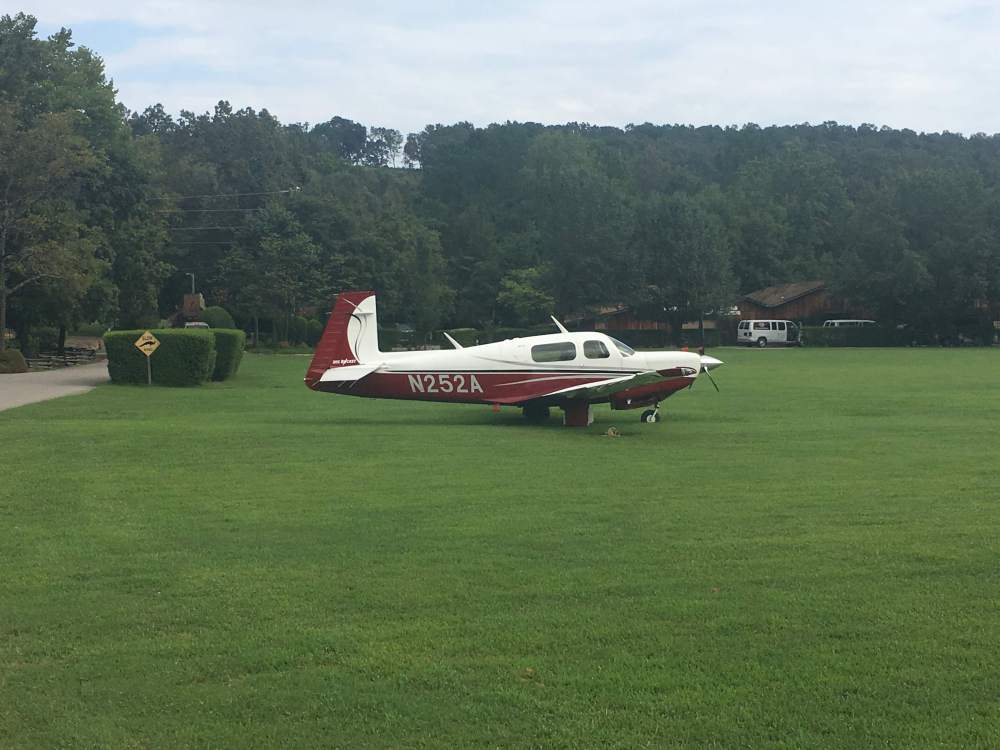
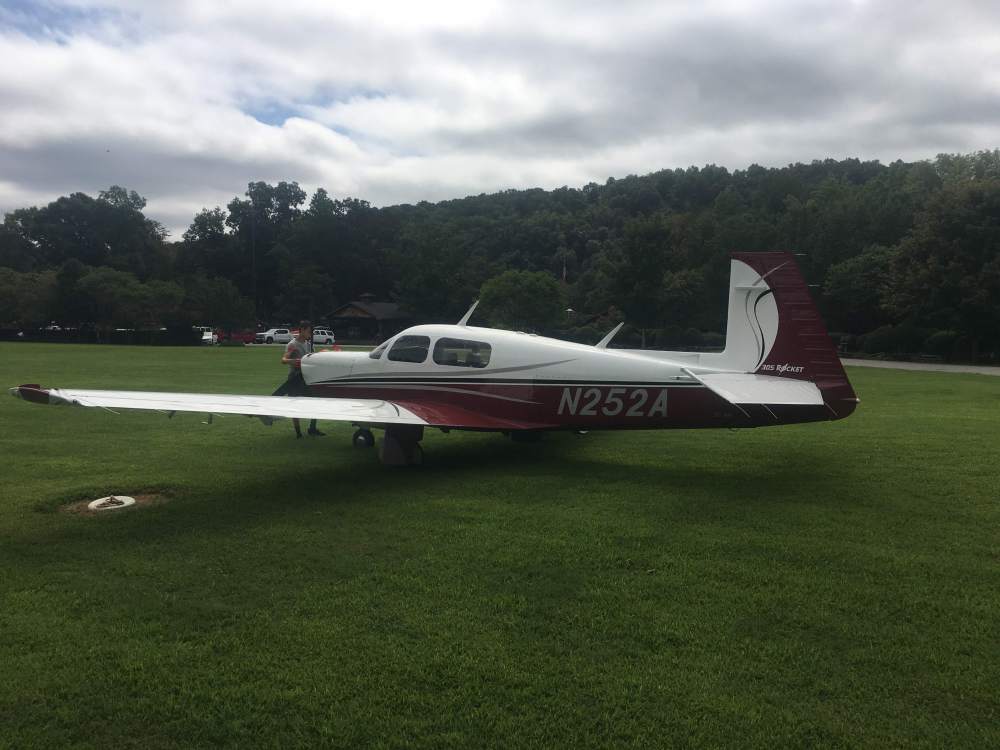
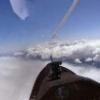


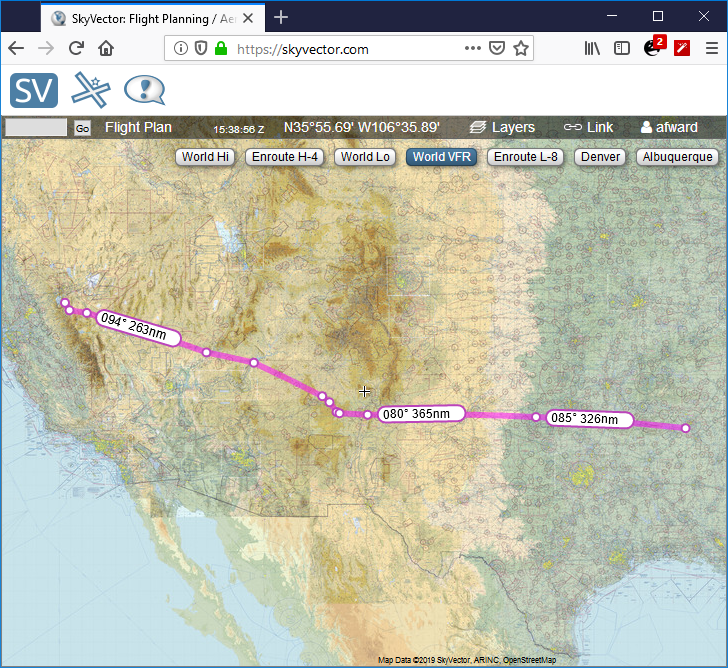
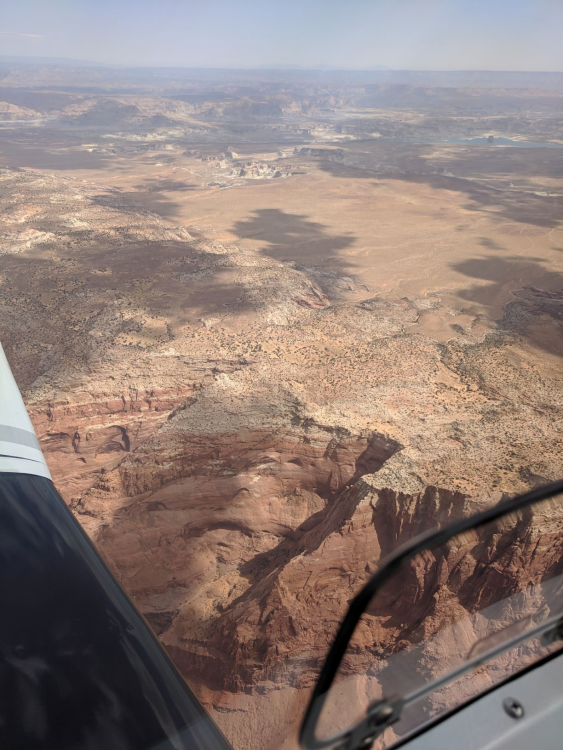
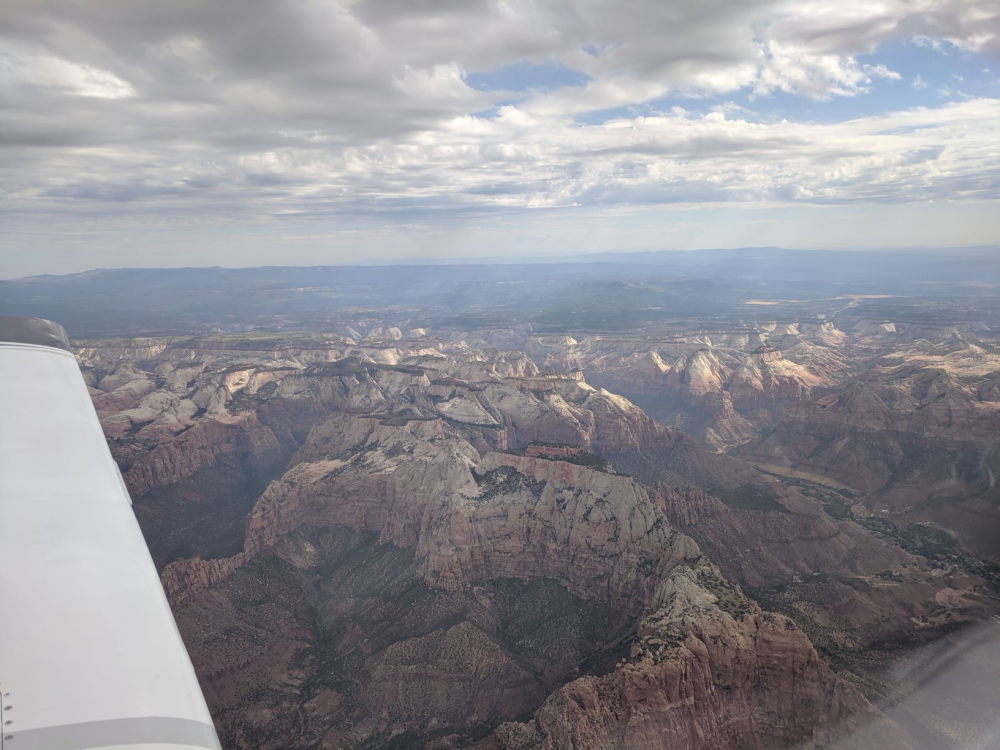
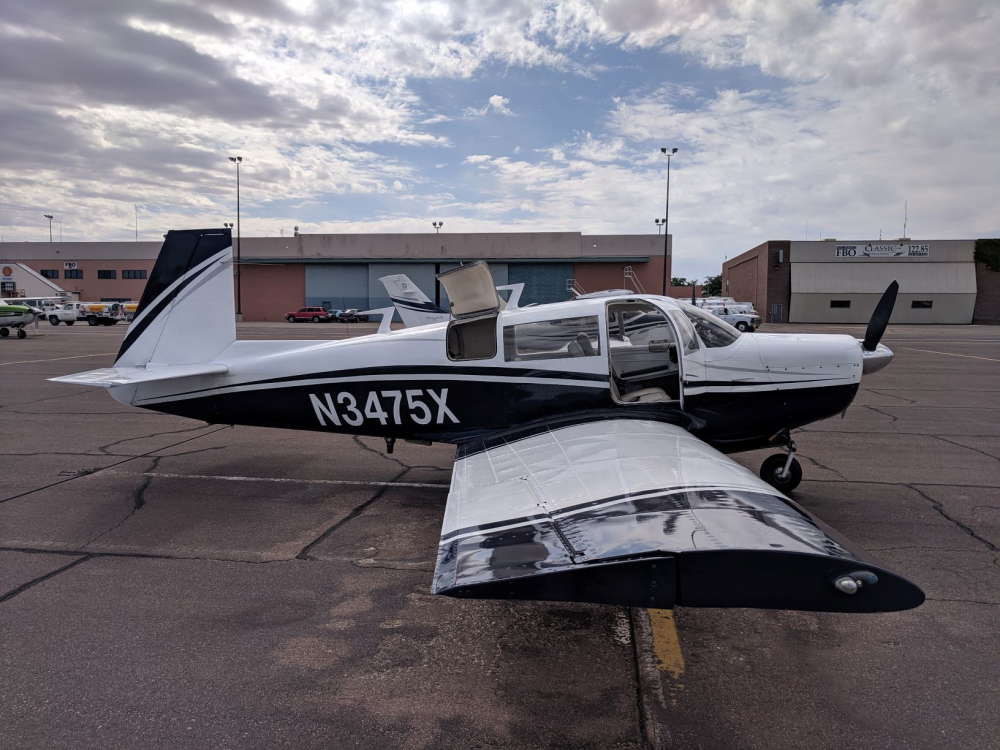
.thumb.jpg.ed6aafa91f819cec0d83fd72d0471094.jpg)
